

of
the world's greatest concert grand pianos!
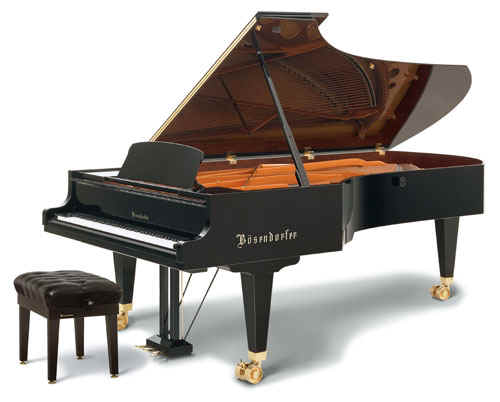
The Concert Grand is the ultimate and finest of any piano manufacturer's
products. They are meant to be used
at the great concert halls, symphonic stages, and opera houses of the world.
They are often "too much piano" for an ordinary house, and can
be overpowering in a small room (kind of like having a tiger for a pet).
But in an auditorium, where their sound is allowed to properly unfold and
resonate, they are the most magnificent products of the piano craftsmen's art.
Whatever you do, don't insult these magnificent instruments by calling
them "baby" grands! Most
people inexplicably think that any horizontal piano is a baby grand -- but how
can any species exist if it is composed entirely of babies?
Where there are babies, there must obviously be grown-ups too -- and
there are; besides the concert grands, there are parlor grands, studio grands,
salon grands, and semi-concert
grands, depending on the length. Baby
grands are those models that are only 5 feet long or less, front-to-back.
They are seldom meant to be serious, professional instruments (you can
get longer strings even in some upright pianos), often being referred to by
musicians as "piano-shaped objects", or "noisy furniture",
and have the reputation of being bought mainly for decoration by society dowagers, to be parked
in the bay windows of their elegant living rooms, which of course
quickly destroys whatever musical ability the instrument ever had by exposing it
to daily variations in sunlight and temperature.
In spite of all this, there are a few baby grands (the most expensive
ones of course) that are nice pianos. Most
budget brands nowadays though are made in China or Indonesia.

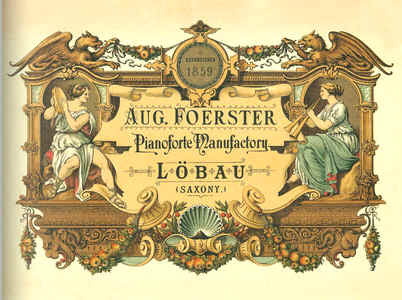
Length 275 cm. / 9' 1" --- Weight 550
kg. / 1210 lbs.

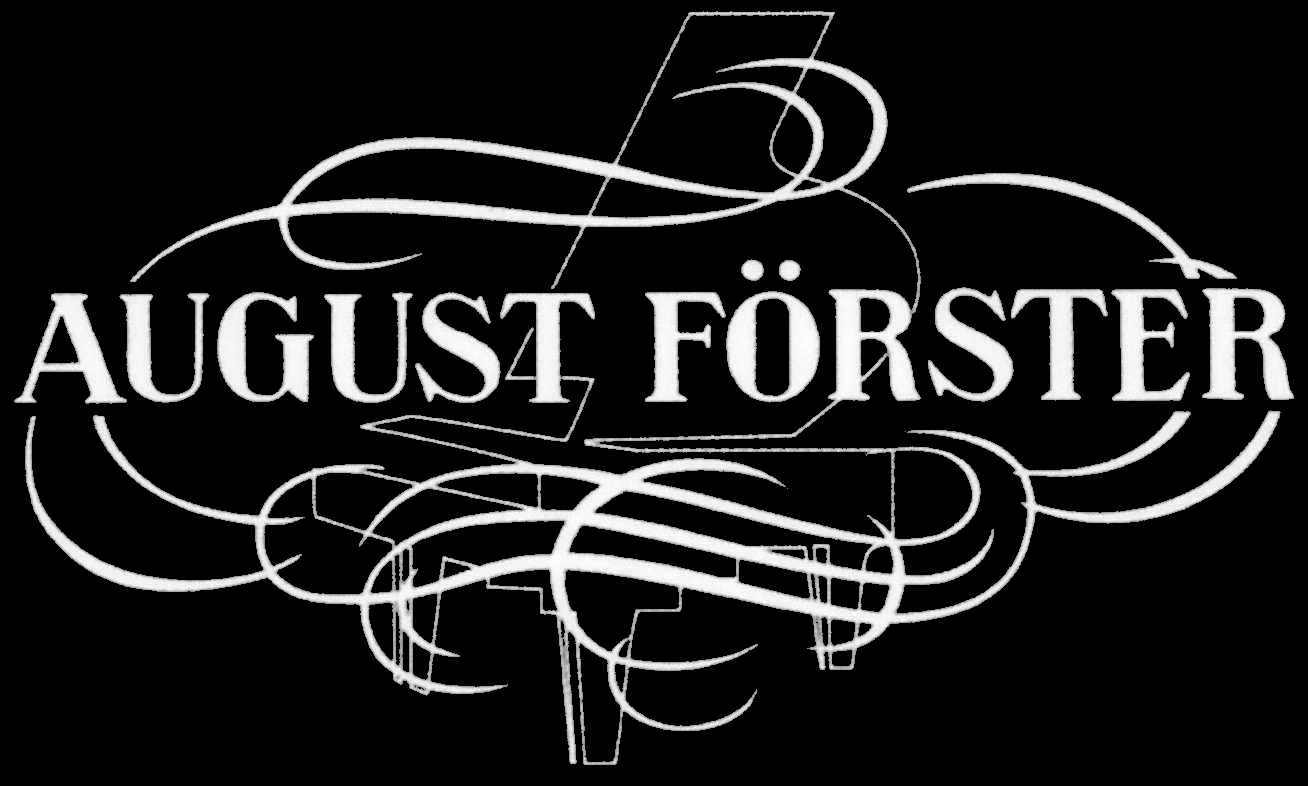

Concert Royal
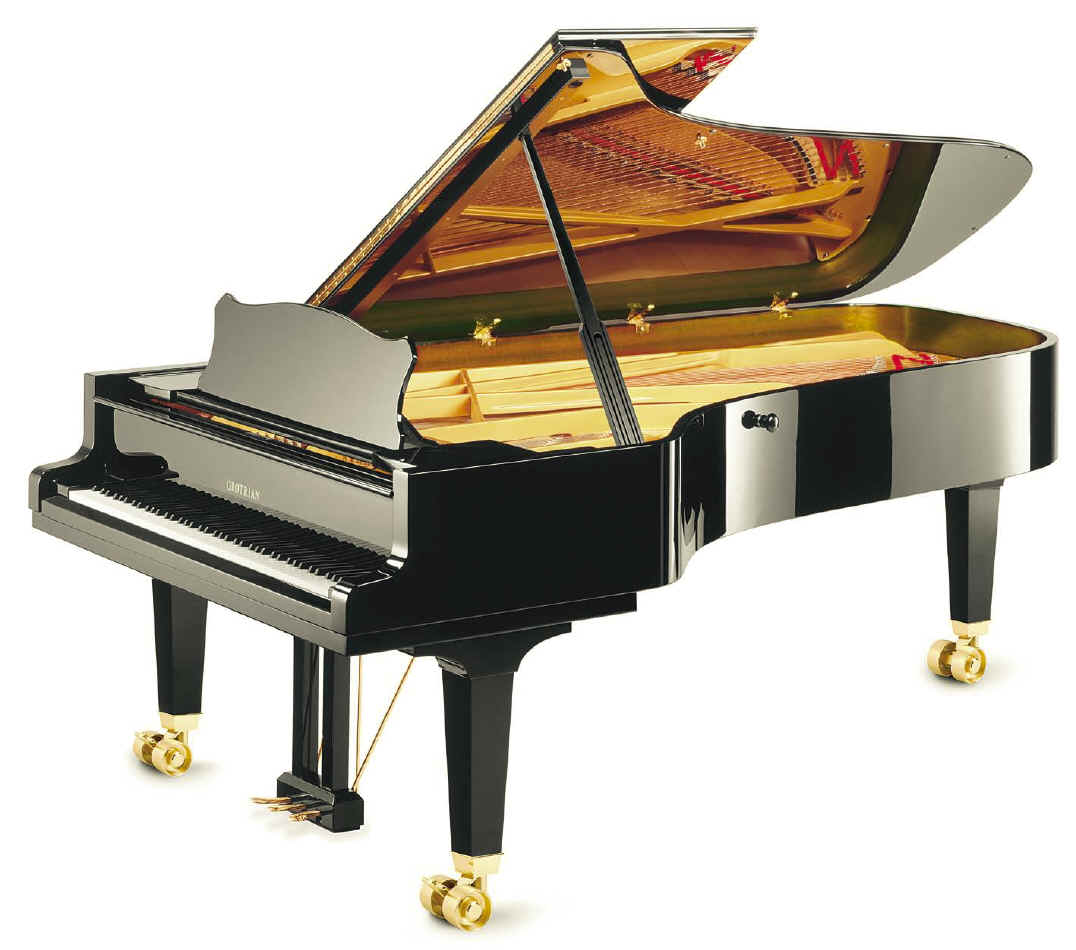
277cm x 156cm x 100cm 550kg
Only about 20 Grotrian Concert Royals
are produced annually.
Each one requires 8 months of manufacture.

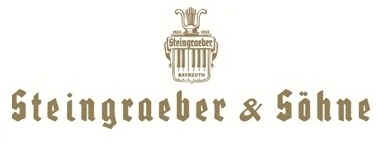
Model
E-272
8‘11”
/ 272 cm
1010 lbs / 458 kgs
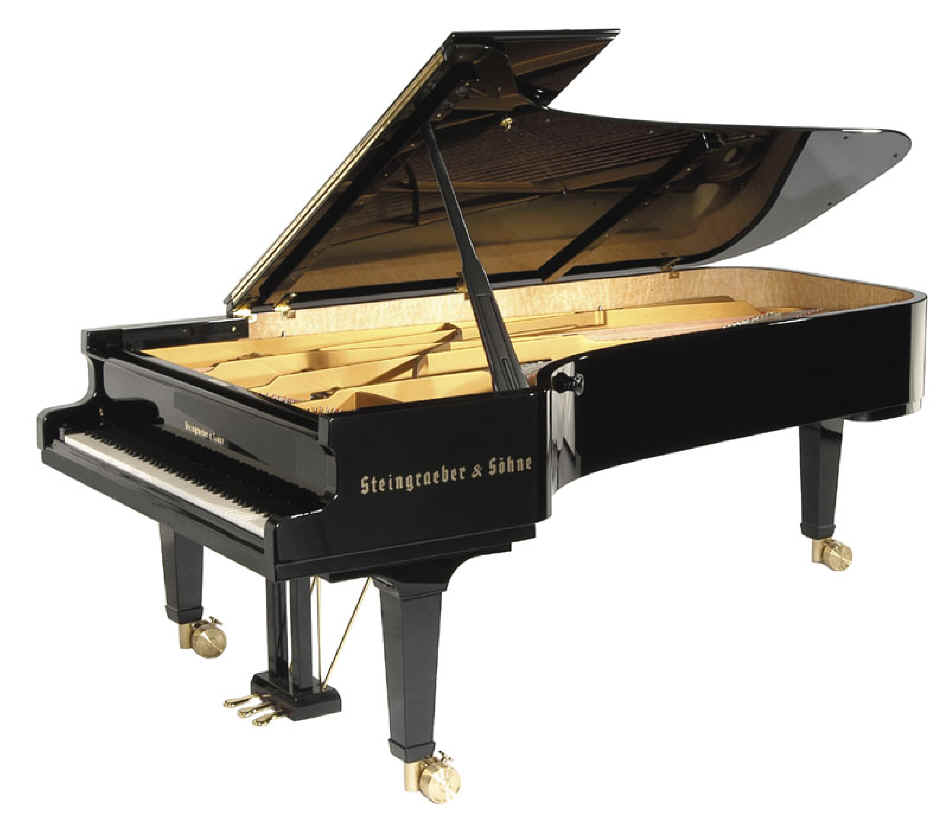
Steingraeber pianos, made in Wagner's town of Bayreuth,
are some of the rarest and most highly prized of all pianos,
because of the extremely small number produced each year.
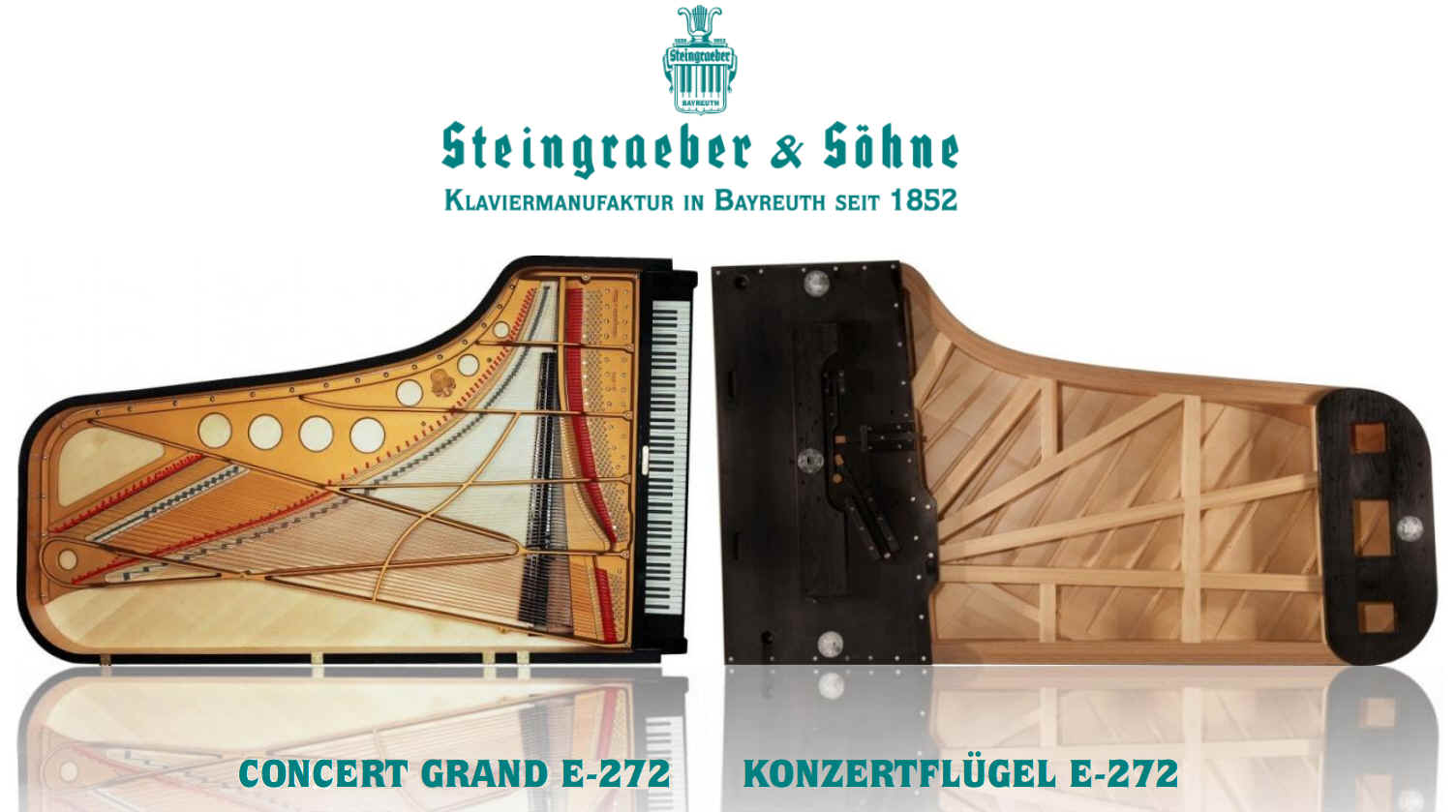

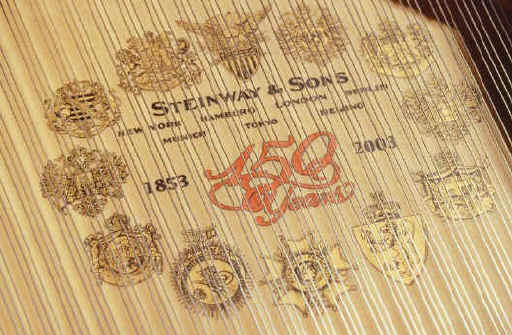
STEINWAY
& SONS
NEW
YORK CITY and HAMBURG, GERMANY
Model D Concert Grand
9' 11 3/4" (274 cm)
990 pounds (450 kg)
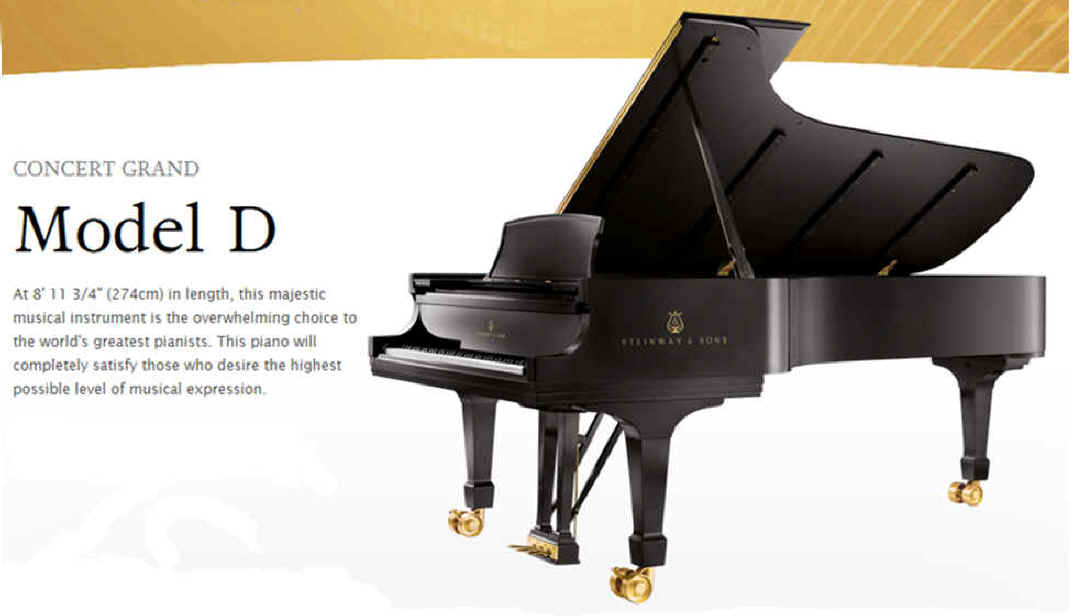
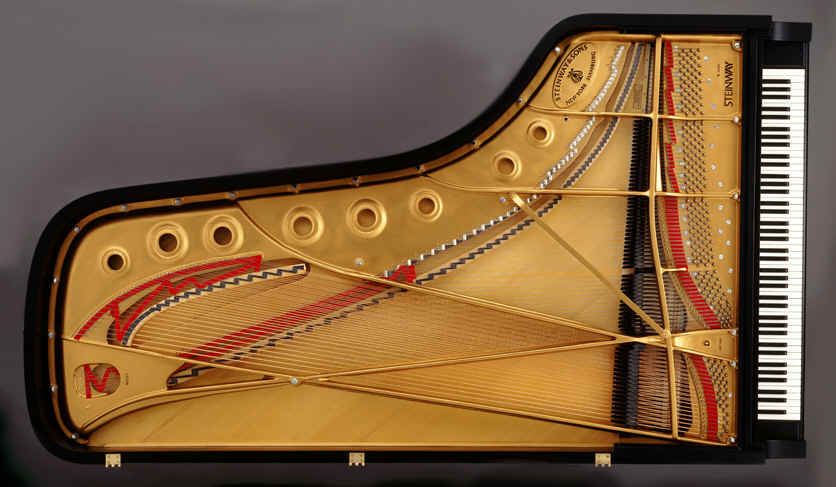
Steinway has long been
the most famous American brand of piano.
The main factory is located in New York City.
However, the pianos made at their other factory in Hamburg, Germany
are often considered of even finer quality.
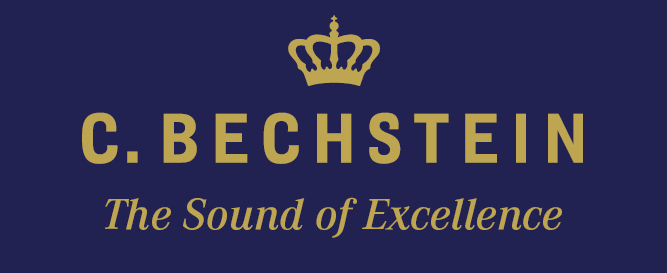
BECHSTEIN PIANOS -- Seifhennersdorf,
Germany
Founded by Carl Bechstein in 1853
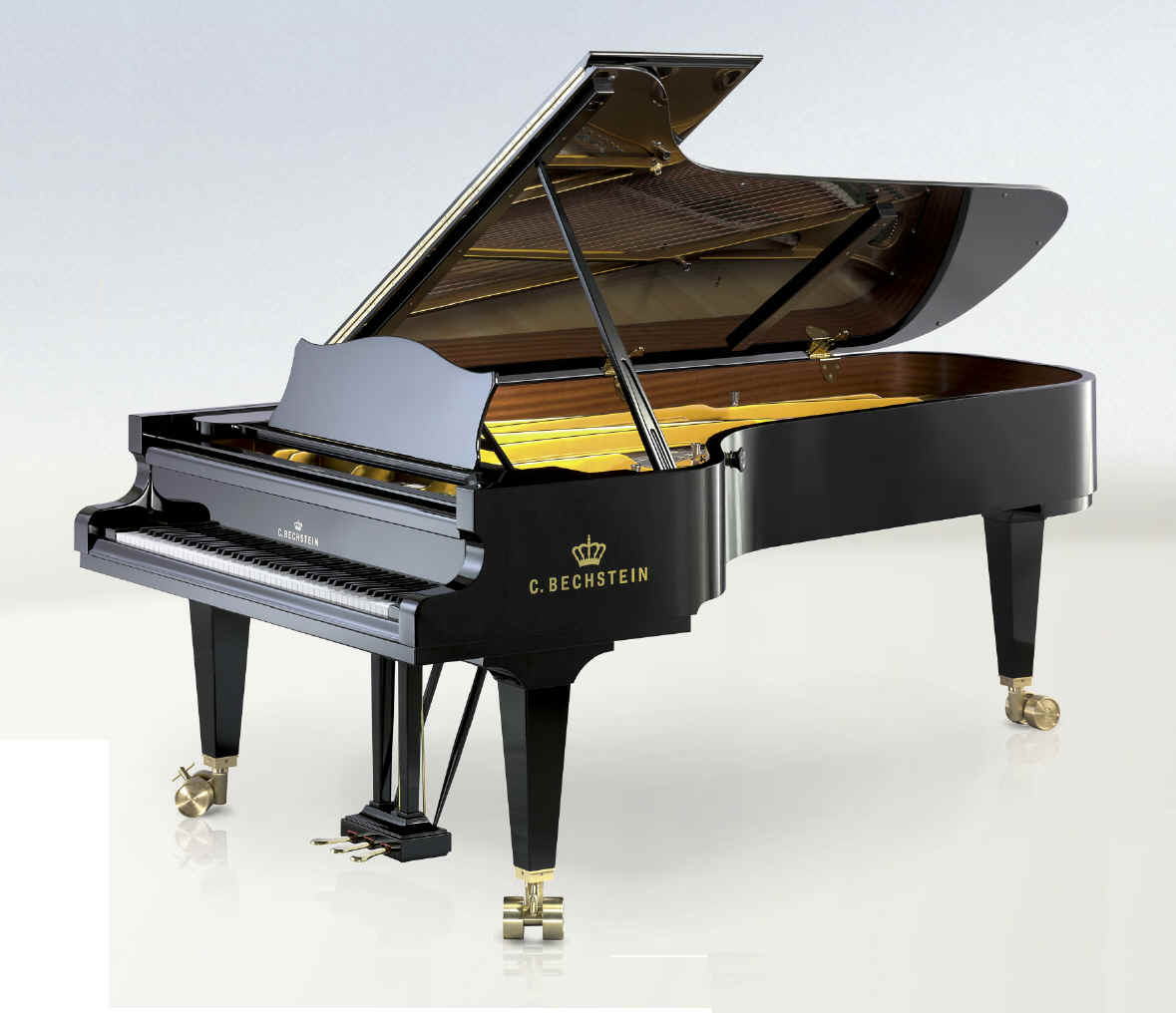
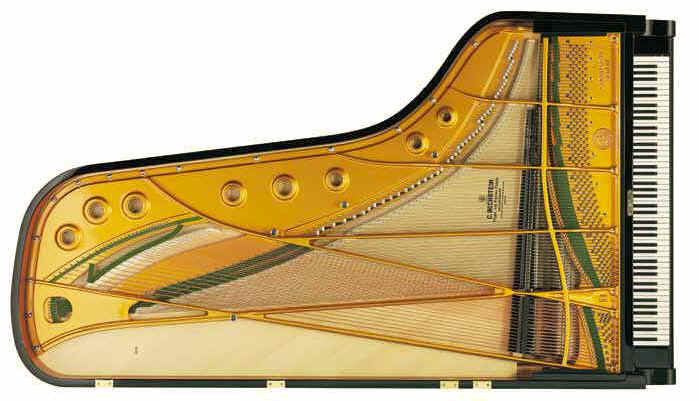
The Bechstein D 282 Concert Grand
Width: 63 inches / 160 cm
Length: 9 feet 3 inches / 282 cm
Weight: 1190 lbs / 540 kg

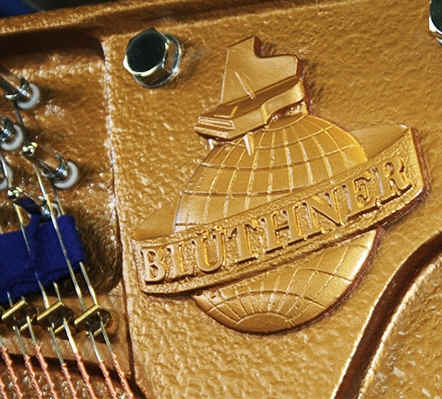
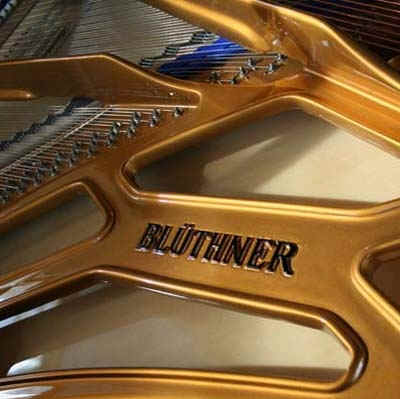
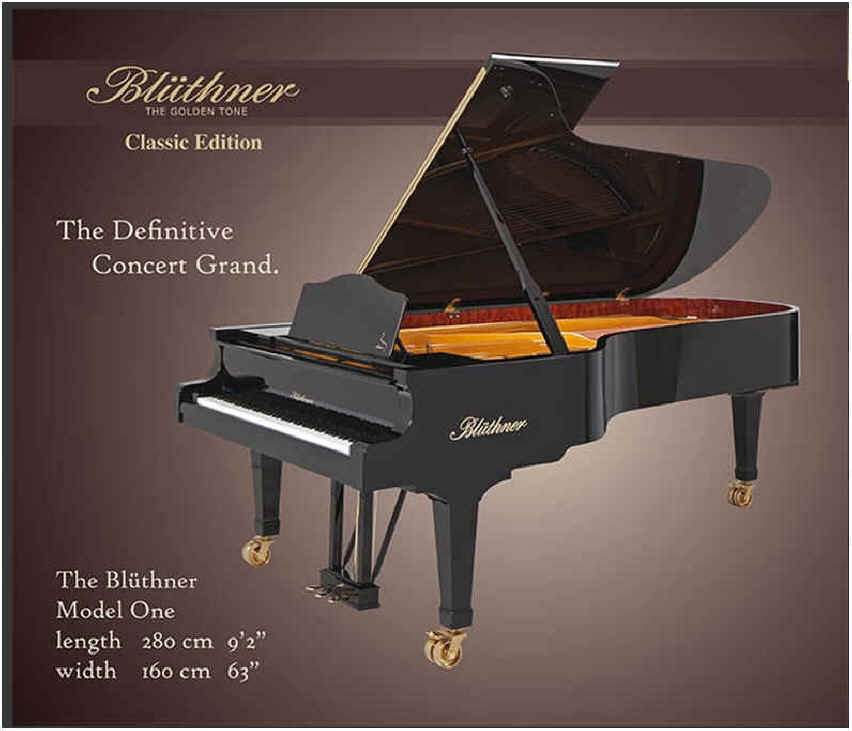
Blüthner is the only manufacturer to use "aliquot strings" -- a fourth string, placed above the normal three strings of the upper keys. This string is not hit by the hammers, but it vibrates in tune with the strings immediately below it, for an added richness of sound.
Many concert grands can be ordered with more ornate woodwork, such as these, the Julius Blüthner Supreme Edition, and the Queen Victoria model:
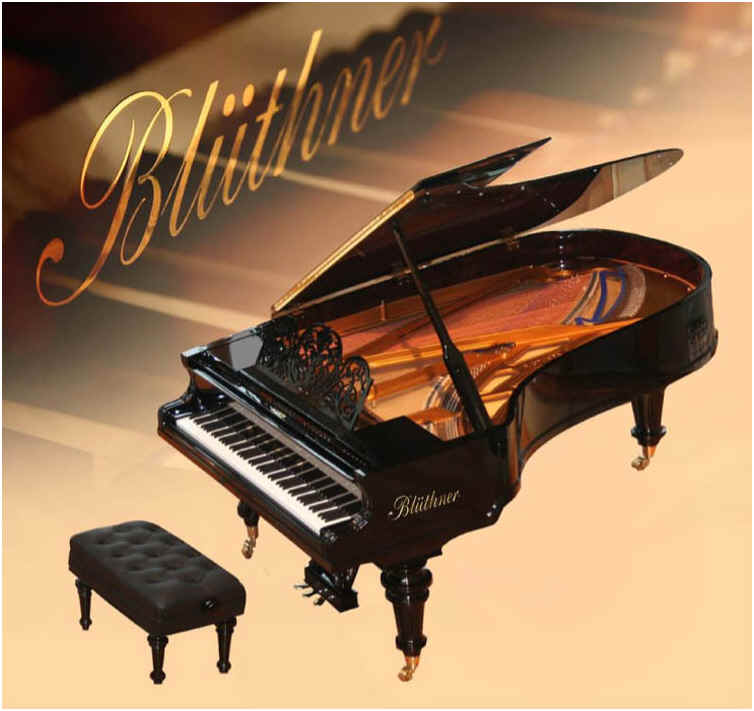
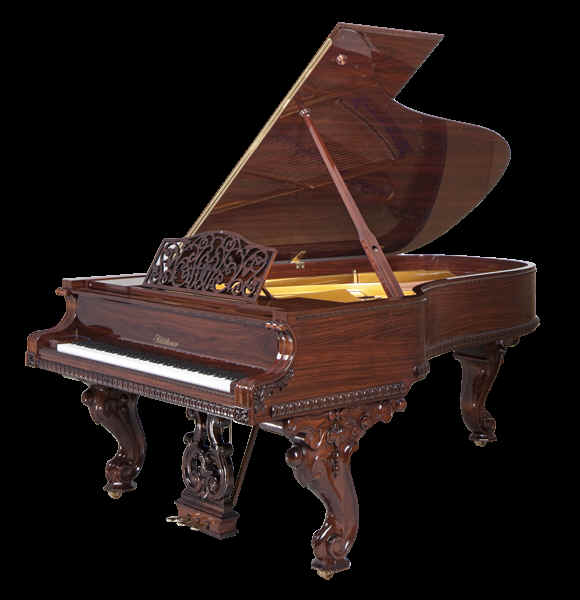

The Fazioli 308 is the crown jewel of the Fazioli series of grand pianos. Made in Sacile, Italy, it is the longest regular production piano in the world.
308 centimeters (10 feet 1 inch) --- 690 kilograms (1545 pounds). Four pedals.
The soundboard is made entirely of red spruce
from the Val di Fiemme in the Alps of northeastern Italy --
the same wood that
was used by Stradivarius for his legendary violins over 300 years ago.
Fazioli is by far the newest of the great piano companies of Europe, being established in 1981. It very quickly went right to the top in terms of quality, reputation, and price.
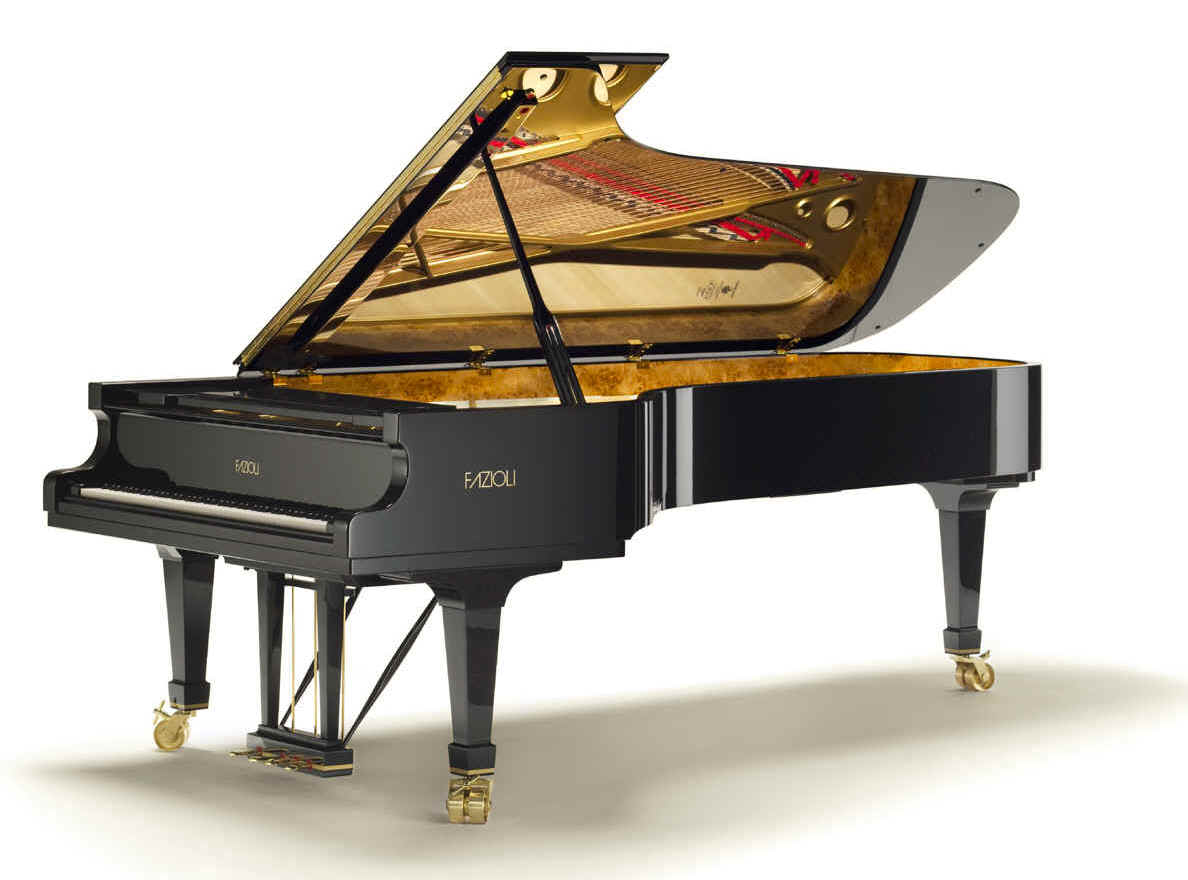
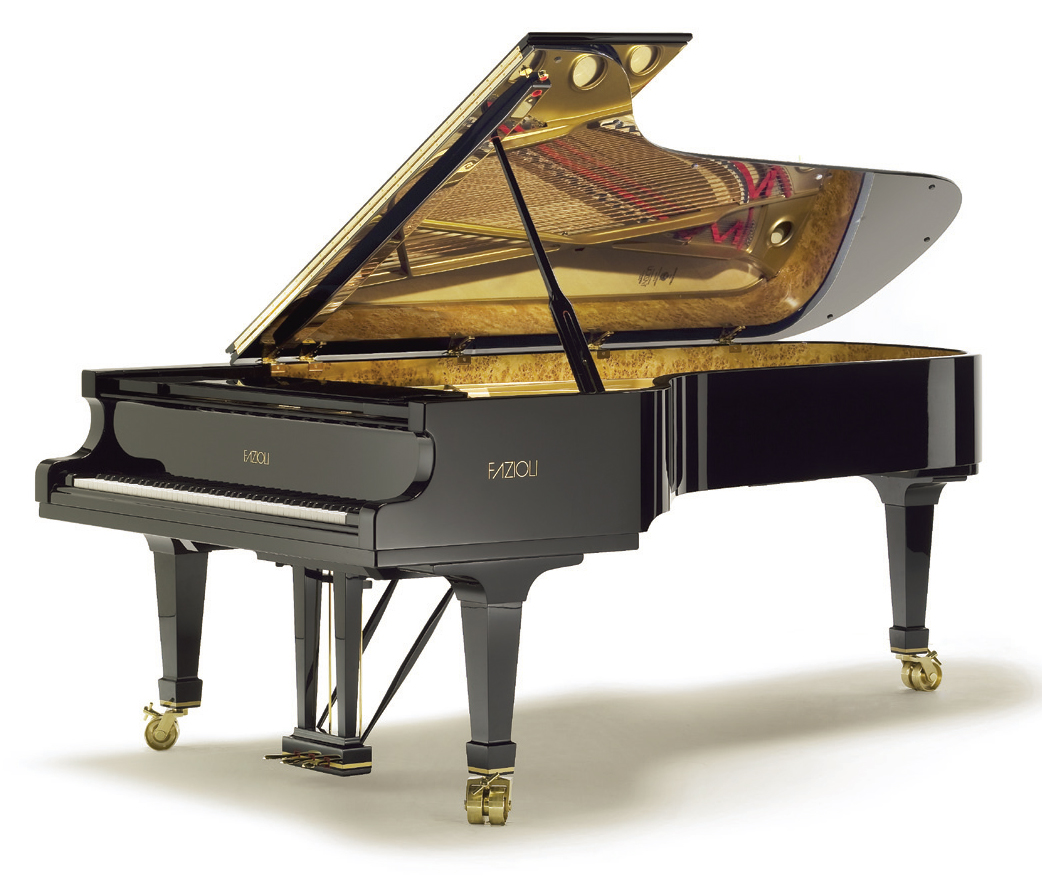
Fazioli also makes
the Model 278 Concert Grand.
Even though it is their second-longest model,
it is still longer than the largest concert grands
of many other
manufacturers.
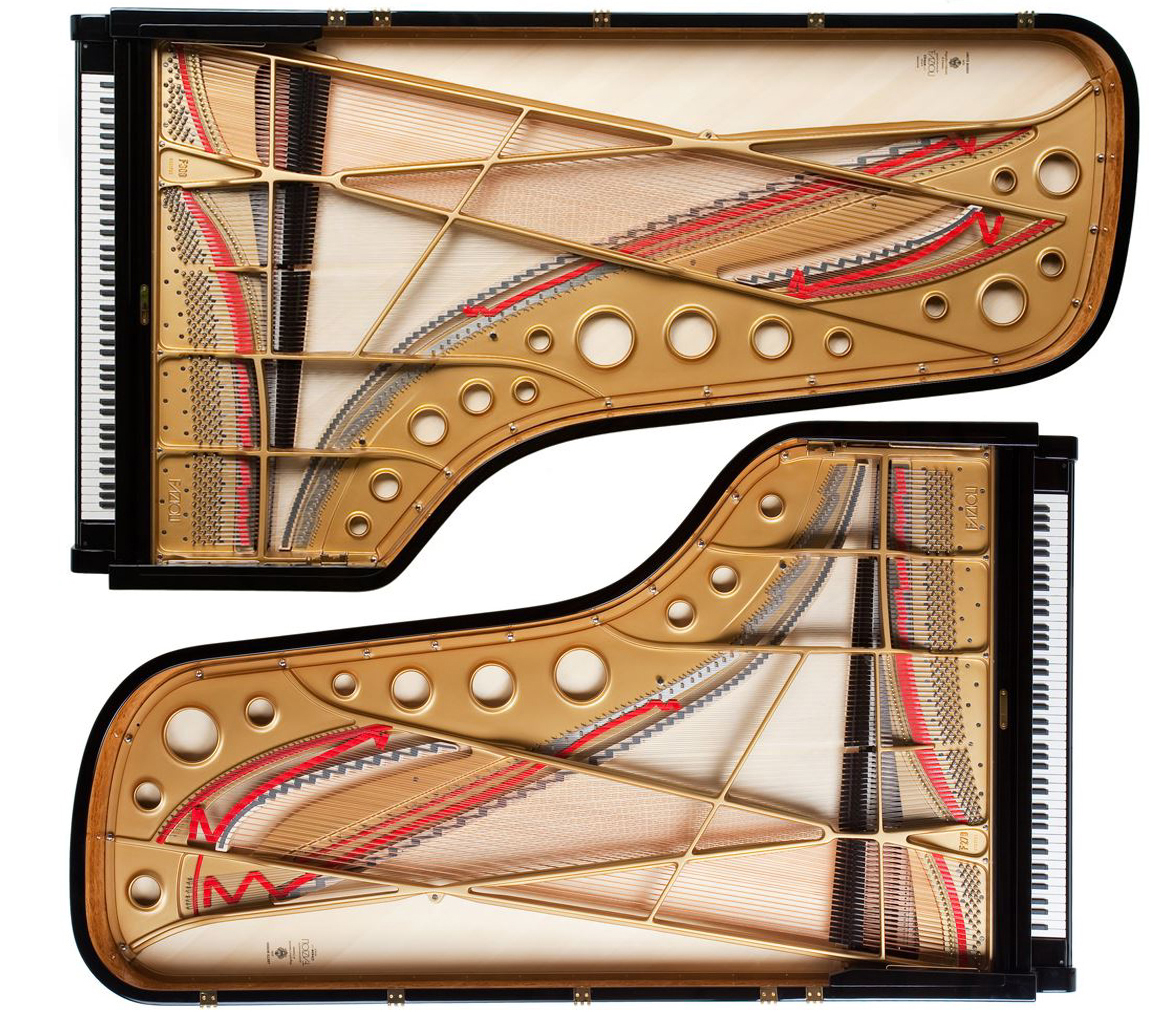
Model 308
10 feet 1 inch
Model 278
9 feet 1 inch
The four pedals of the
Fazioli 308:
The one on the left raises all the hammers
closer to the strings, to provide a softer volume
without altering the basic sound of the piano
like the una corda pedal does.


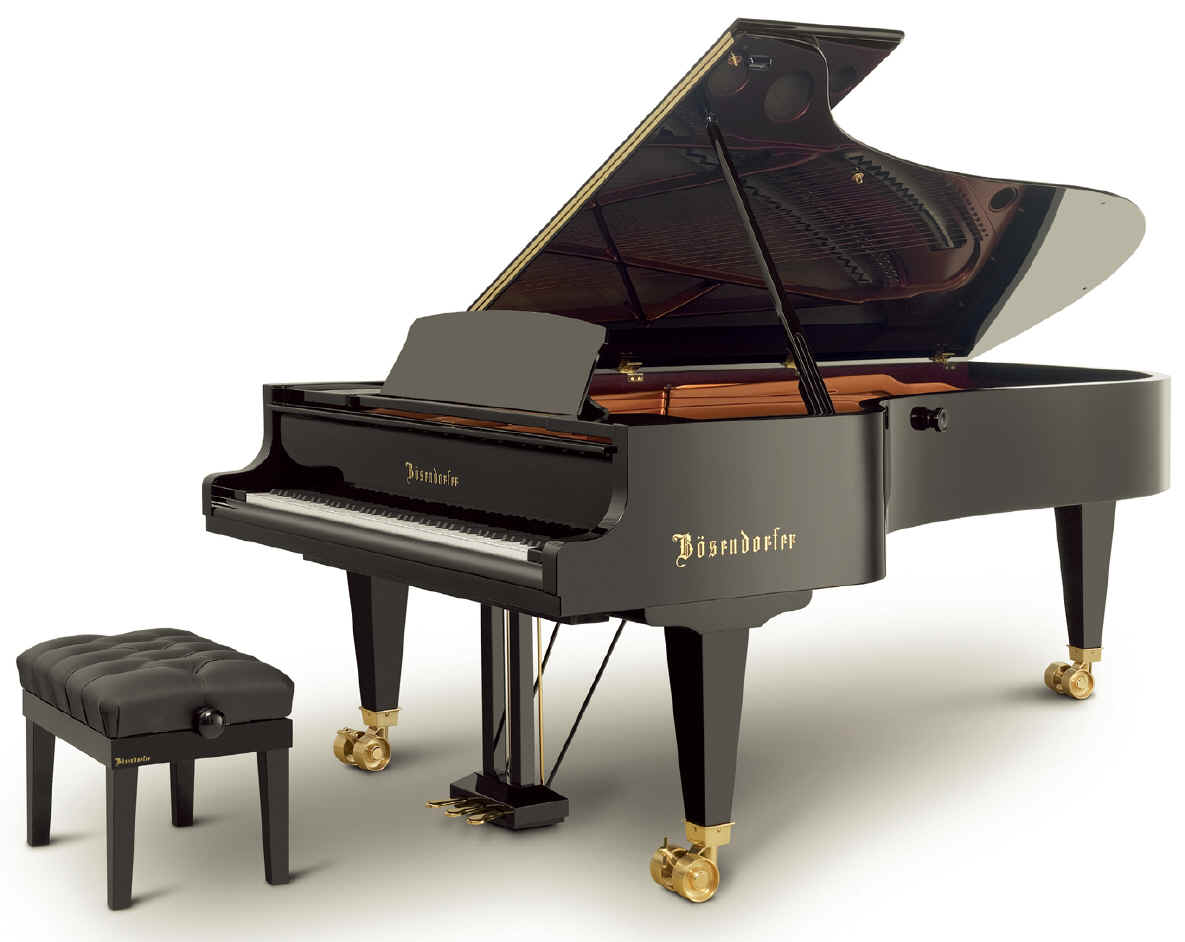


The Imperial Grand has 97 keys -- 8
full octaves.
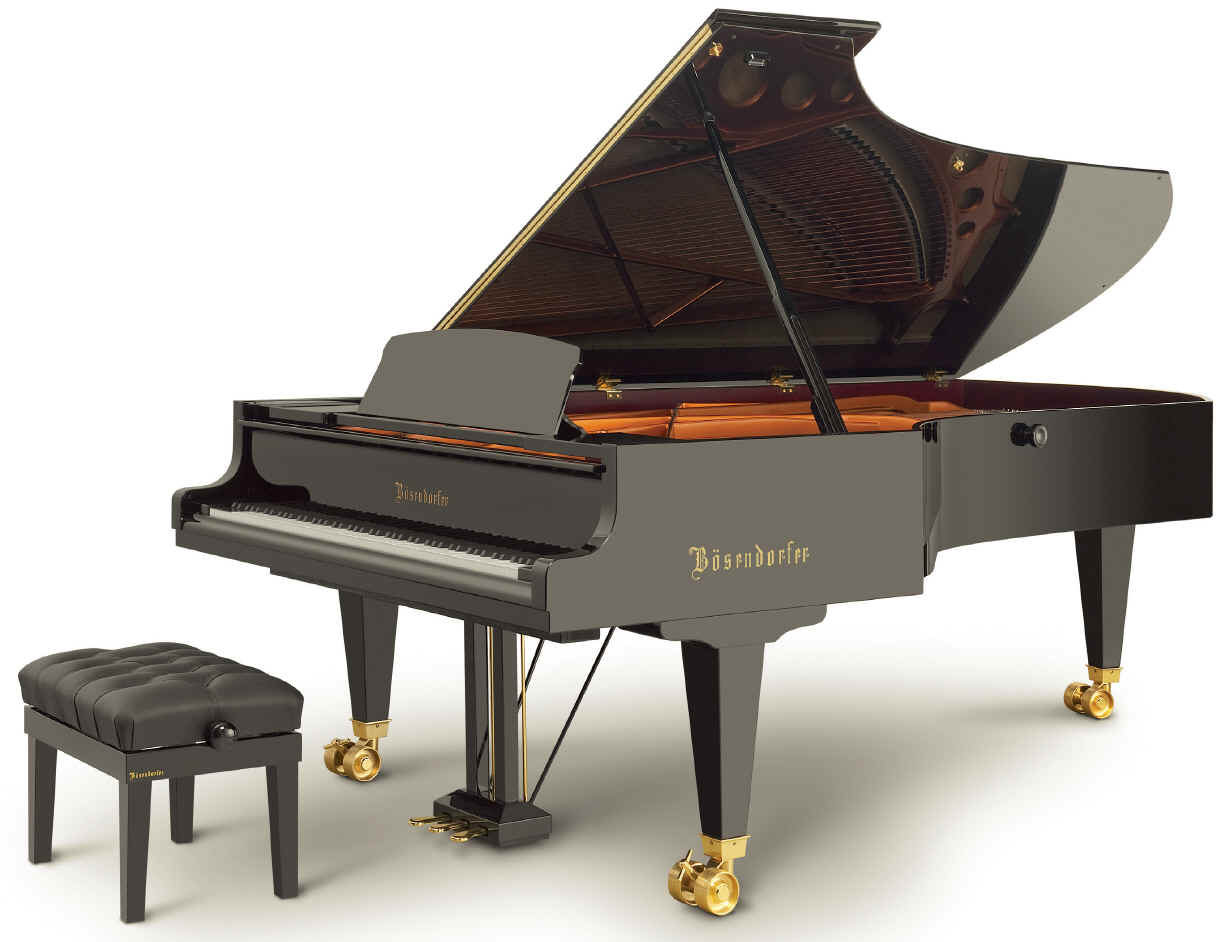
Bösendorfer,
perhaps the world's most prestigious brand of all, is the
only company to make two concert grands
with two completely different methods of
construction.
The Model 280 (at 9'
2" or 280 centimeters) has the usual curved rim, made of many layers of
thin veneers
bent around a form and laminated.
But the
rim of the Imperial grand (9' 6", or 290 cm) is built quite differently
from that of any other piano in the world,
being made in solid sections of wood that are then jointed together, producing
angles instead of smooth curves.
It is also made of spruce instead of the usual maple or beech wood. The
spruce is from the famous Val di Fiemme in Italy.
colored black so as not to disorient a player more accustomed to 88 keys.
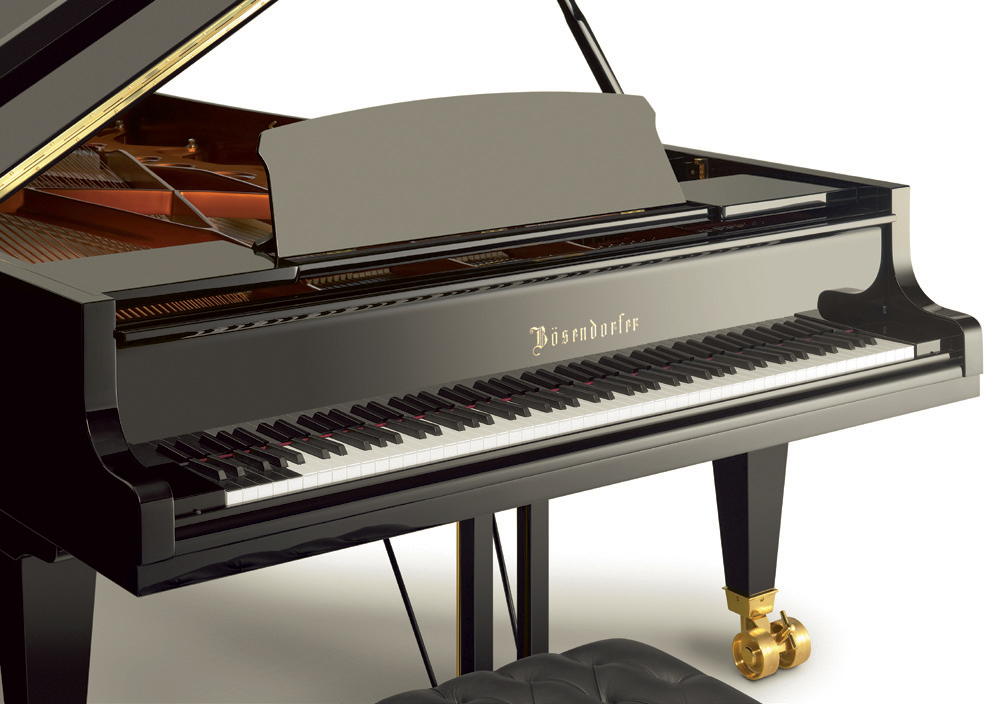
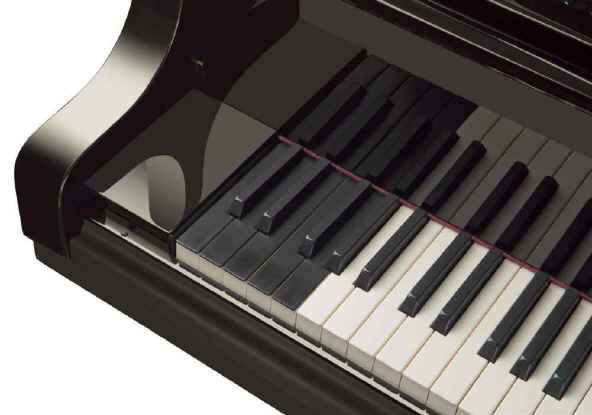
The
back of the Model 280,
showing the curved rim of the case.
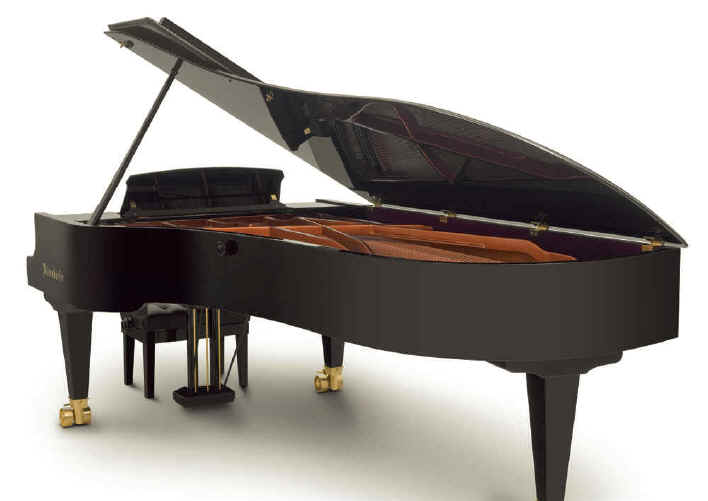
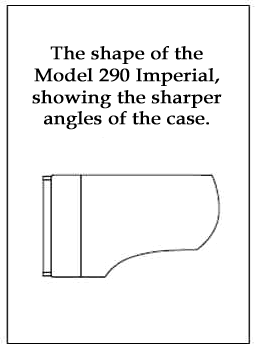
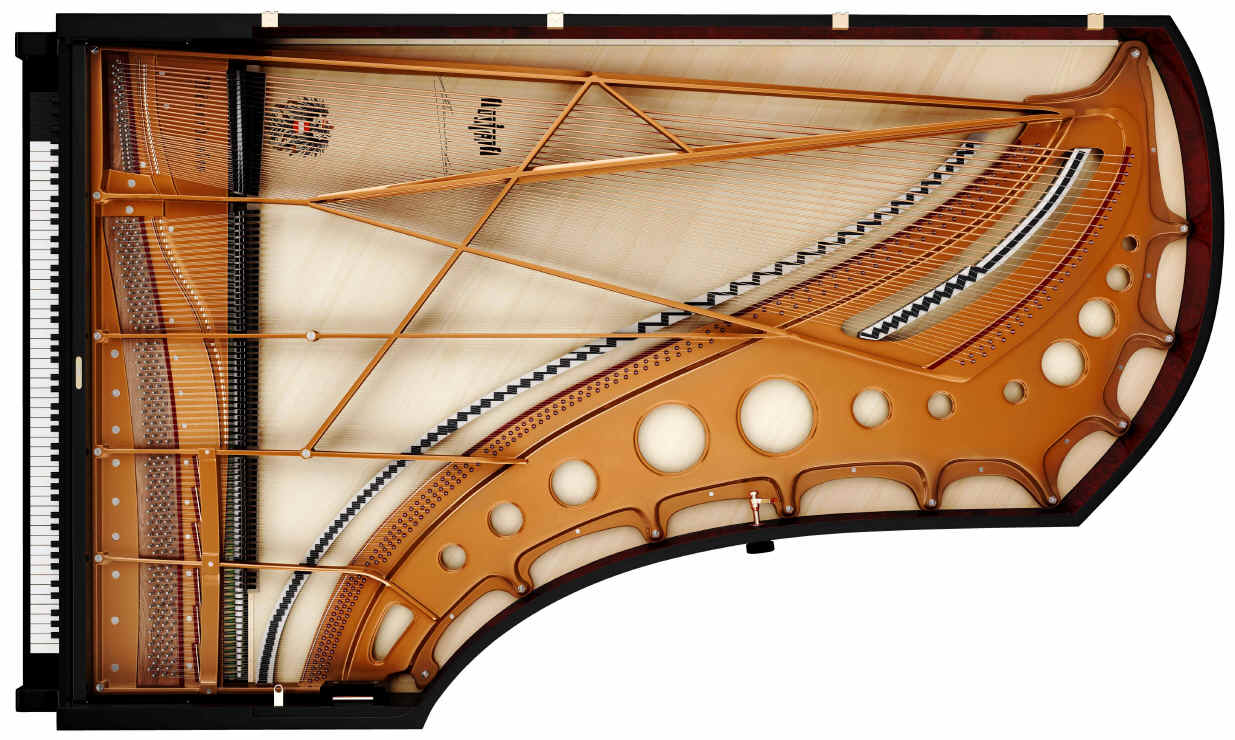
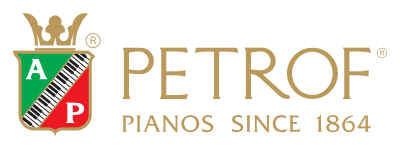 CZECH
REPUBLIC
CZECH
REPUBLIC
P 284 Mistral
grand piano 284 cm / 9 ft 3 in
Weight – 560 kg / 1232 lb
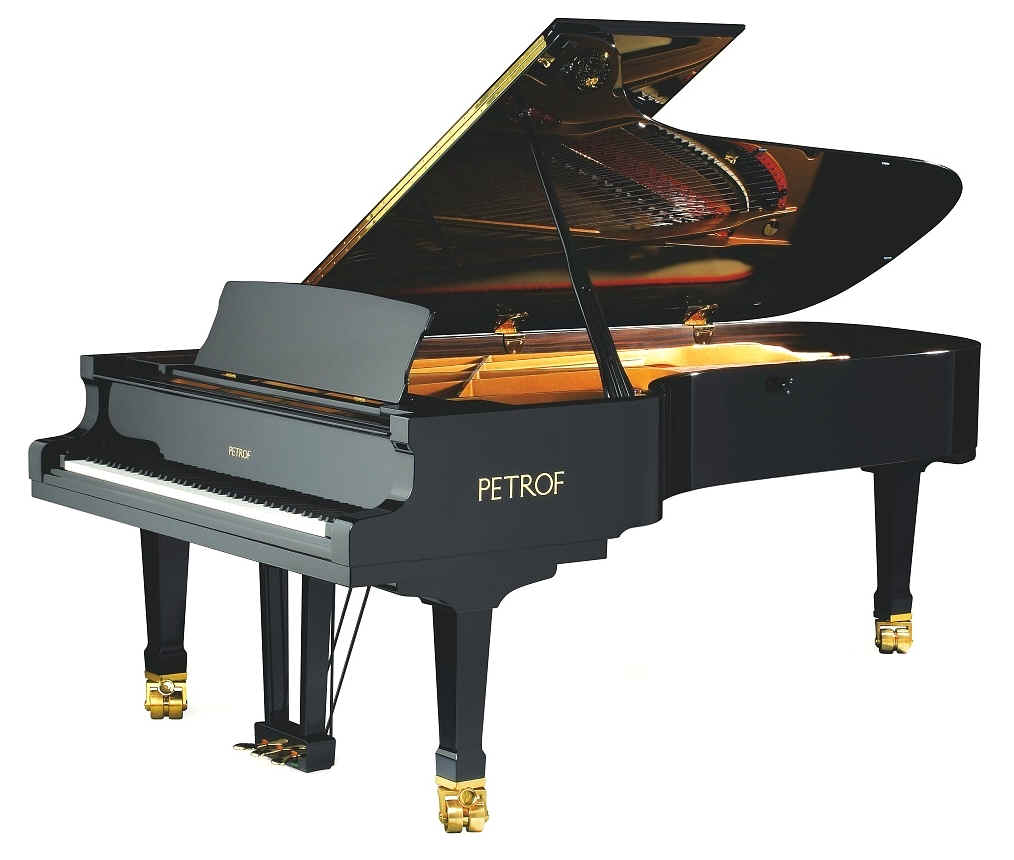
Petrof,
of Hradec Králové, Czech Republic, is one of the few piano companies from a
former communist country to survive to the present. In fact, it is one of
the largest piano companies in Europe, producing around 14,000 pianos a year, of
which 1750 are grands of various sizes.
The company was established in 1864 by Antonín Petrof. In 1948, it was
confiscated from the Petrof family by the government of Czechoslovakia. In
1991, it was finally returned to them, and now the fifth generation of the
Petrof family is in control.
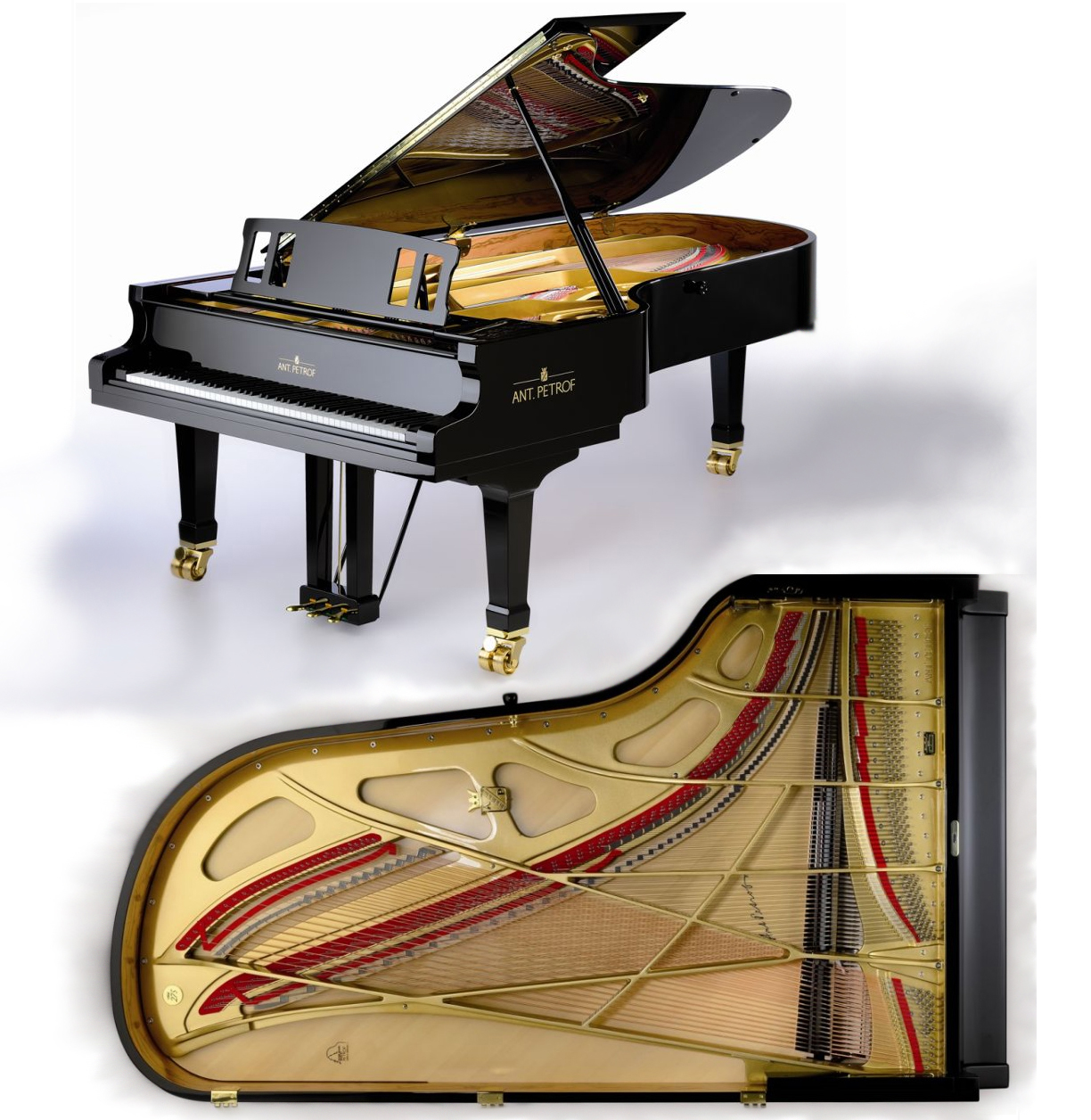
Ant.
Petrof 275
Concert Grand piano
275 cm (9' 1") long
One of the
world's newest models
of concert grand is the Ant. Petrof.
The founder of the company,
Antonín Petrof, used the same
abbreviation on his very first pianos.
Now, after 150 years,
the original brand has been reborn.

Schimmel is the largest piano
manufacturer in Germany.
K280T Concert Grand in Ebony High Gloss
Length: 280 cm
Weight: 490 kg
Pleyel is the most famous of all French piano companies, and the oldest piano
manufacturer in the world, being founded in 1807.Pleyels were the favorite pianos of the greatest of all piano composers, Frédéric Chopin.
They were also owned by Debussy, Ravel, Grieg, Gounod, Rossini, Massenet, Mendelssohn,
Offenbach, Meyerbeer, and by many royal families of Europe.
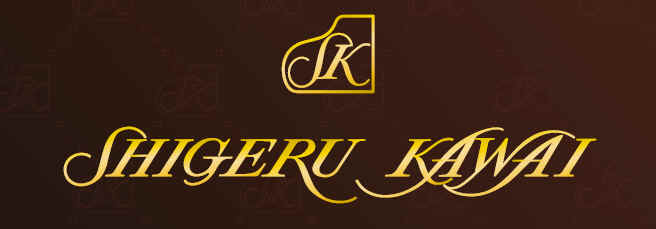
The premier piano of Japan.
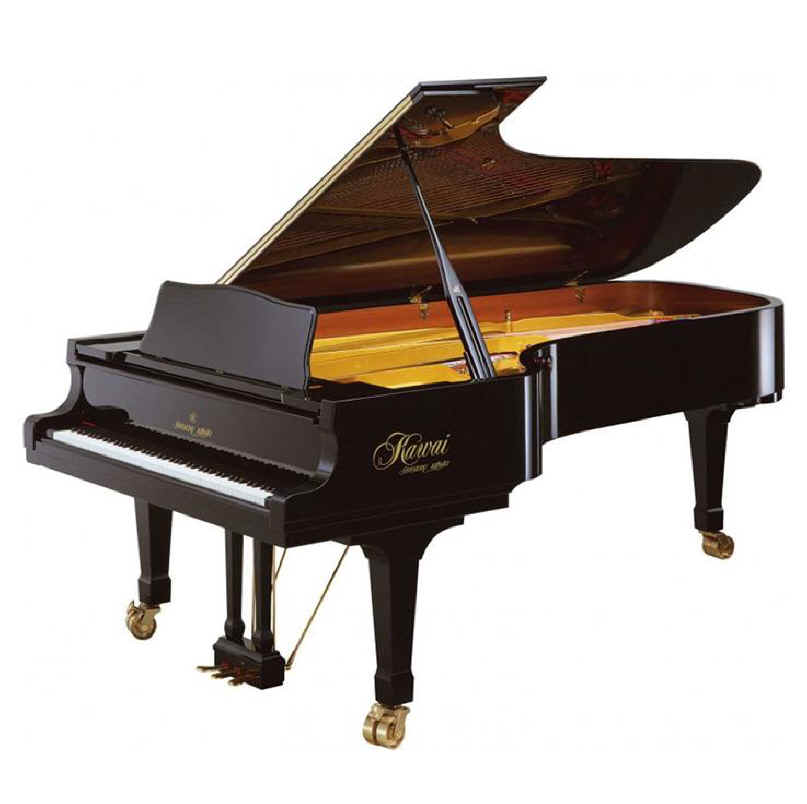
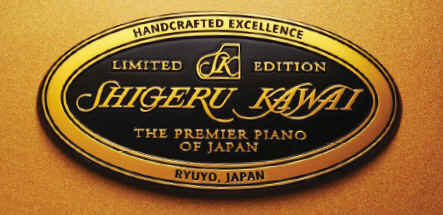
Speichingen,
Germany
275 cm -- 560 kg
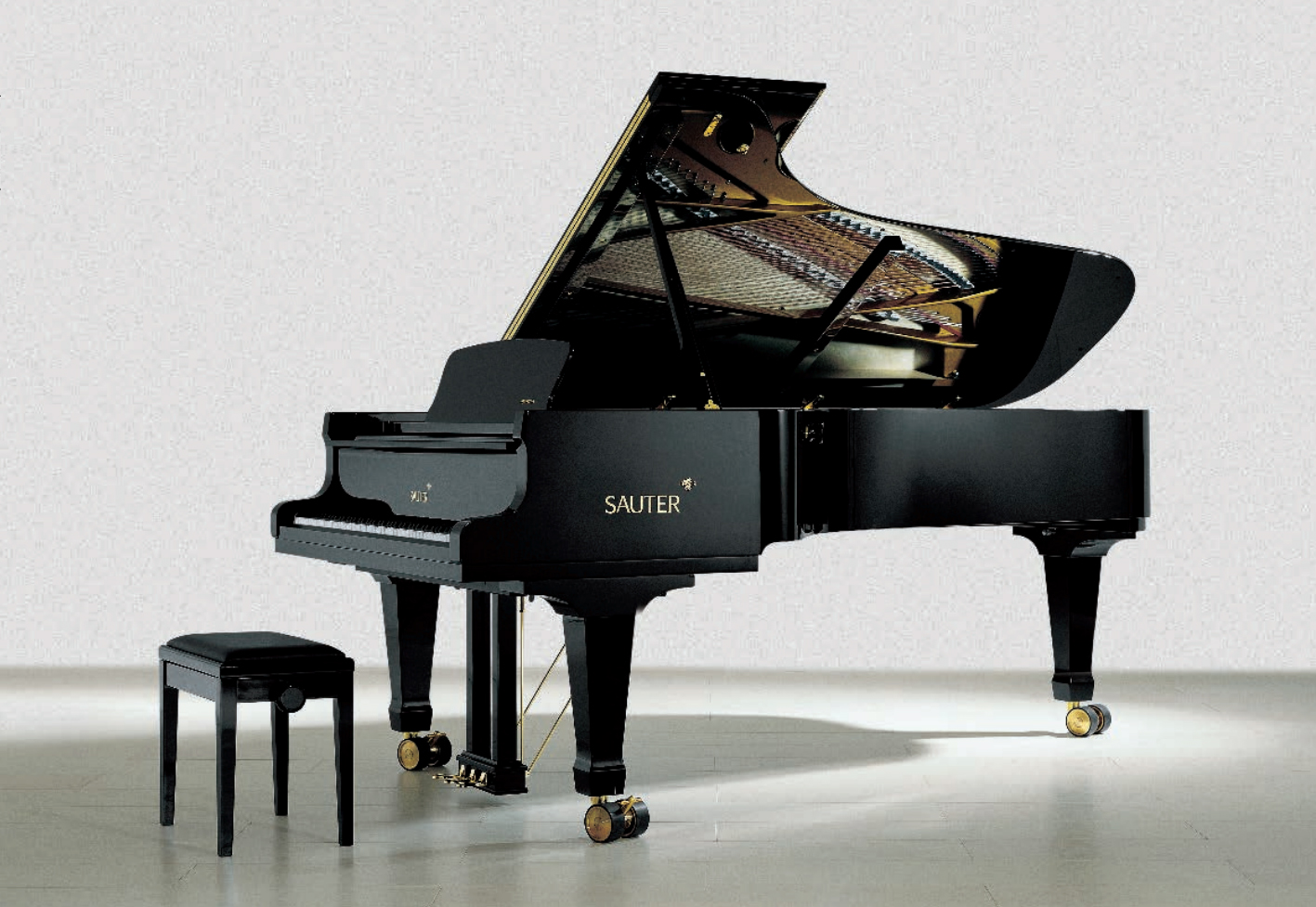
Sauter, established in 1819, has been in
continuous production longer than any other piano company in the world.
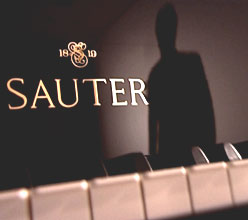
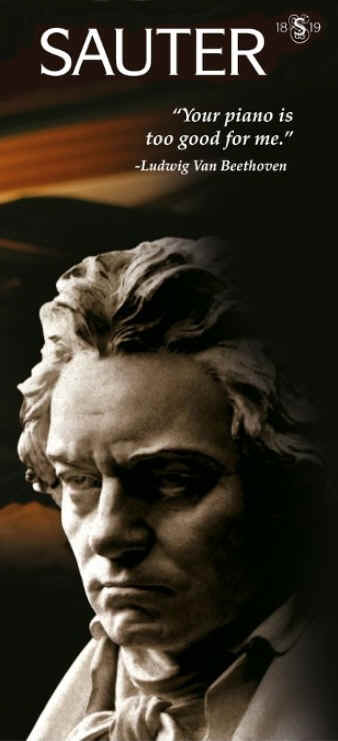
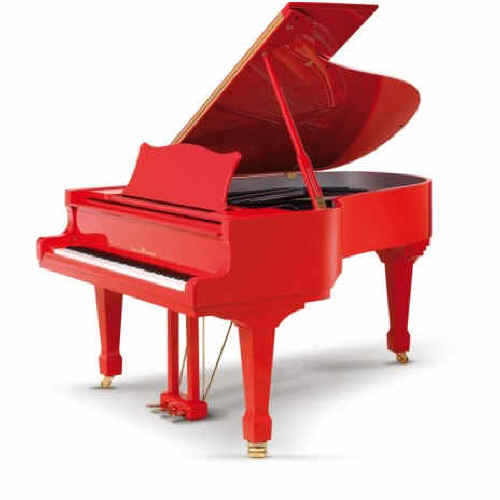

Schulze Pollmann, in spite of the German name, is located in the tiny republic of San Marino, which is surrounded by Italy. They do not make concert grands, but they are famous for their innovative models such as the Ferrari Rosso pianos.
Ferrari contacted Schulze Pollmann to obtain a red piano matching the color of
their racing cars; this piano was meant to be used at their most prestigious
worldwide dealerships and auto shows.
Schulze
Pollmann's technical experts in painting and master carpenters did their
utmost to replicate on wooden surfaces the same visual result requested by
Ferrari, which, until then, had been obtained only on metal surfaces.
The 197 “Rosso Formula” comes from this experience; it is now produced upon request, in limited quantities. In addition to the exclusive red color, which is warm and shining, this piano offers other unique features: a matching bench with velvety-leather red top, an iron frame cast in carbon-grey color (like the racing cars' engines), and the inner side of the rim in the same metallic grey.
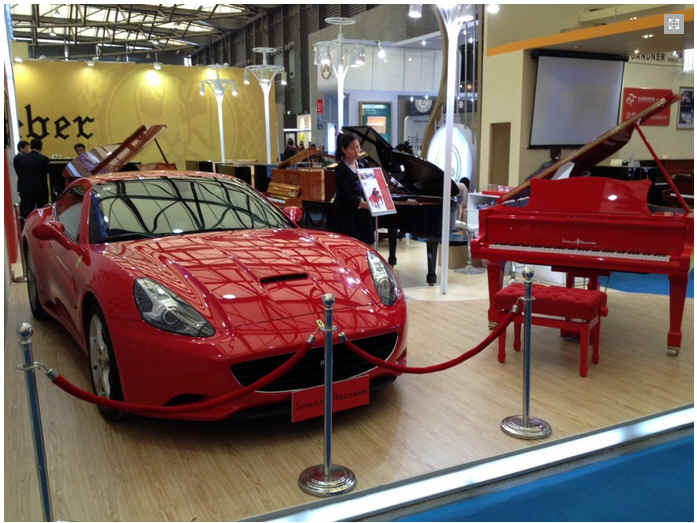
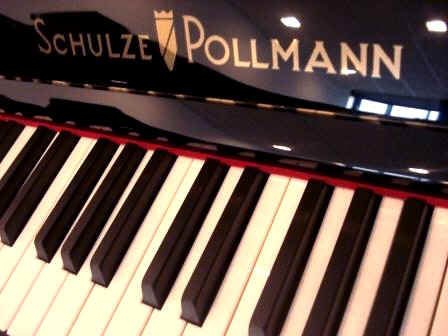
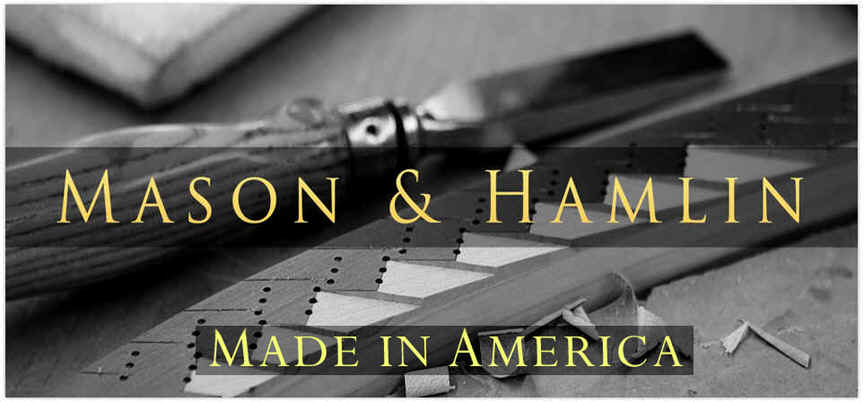
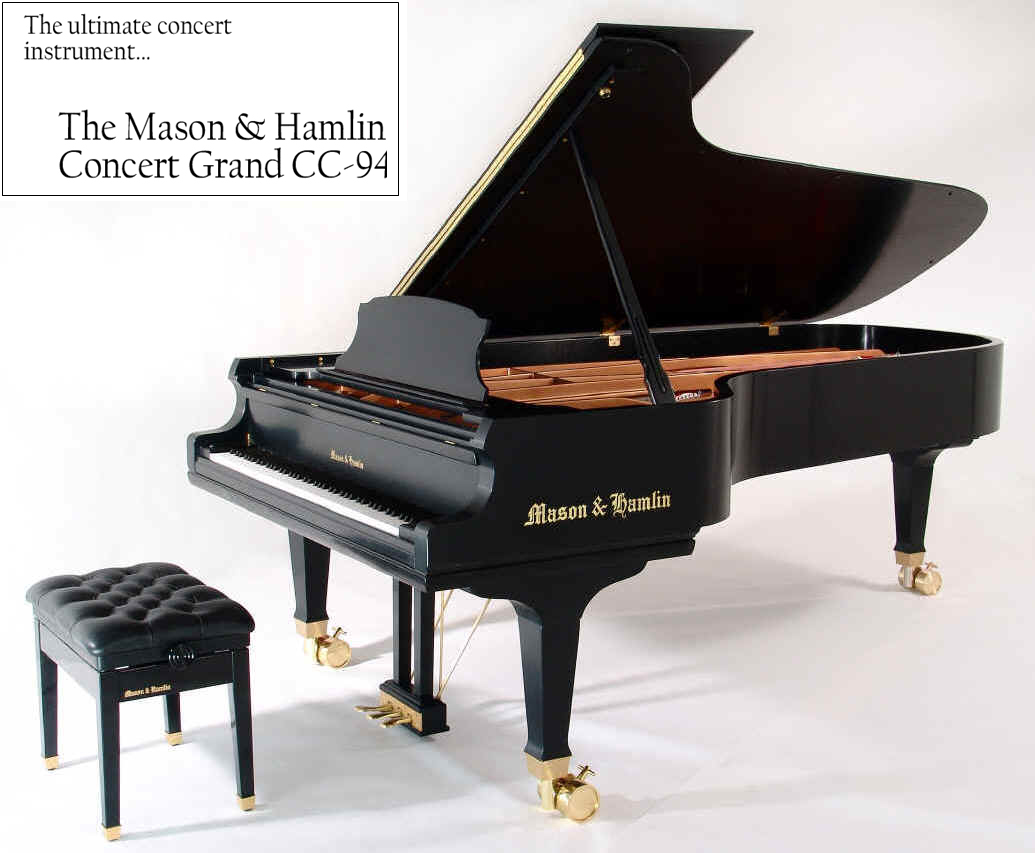
The
concert stage has a formidable new star in the CC-94, the first concert grand
designed, built and introduced by an American piano manufacturer in half a
century.
Handcrafted
in limited numbers using only the world’s finest materials, the CC-94
epitomizes the piano maker's art. It is distinguished by a massive rim, wide
body, and oversized soundboard, guaranteeing that the CC-94 will retain all of
its brilliant tonal characteristics throughout the life of the instrument.
The
CC-94 is available in classic ebony satin, polished ebony, and rosewood.
As always, Mason & Hamlin pianos are Made in America.
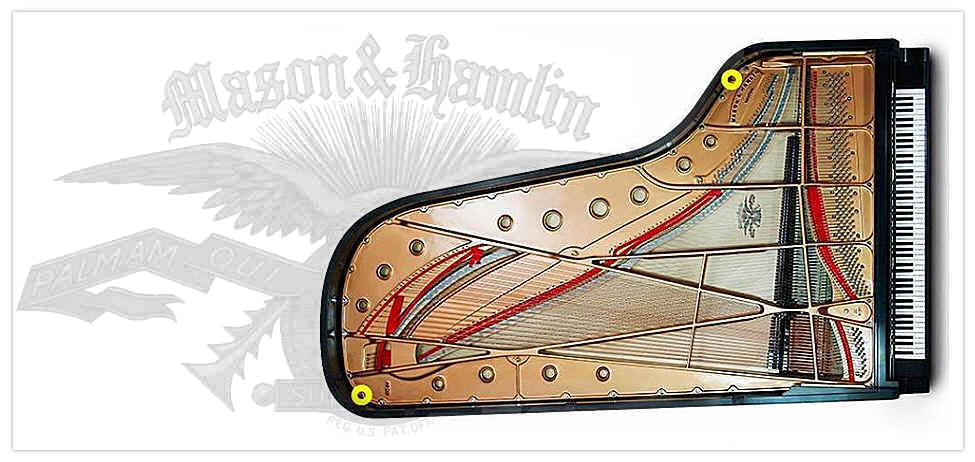
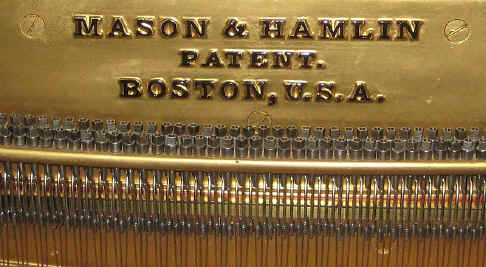
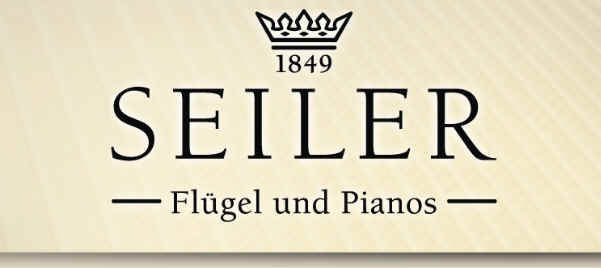
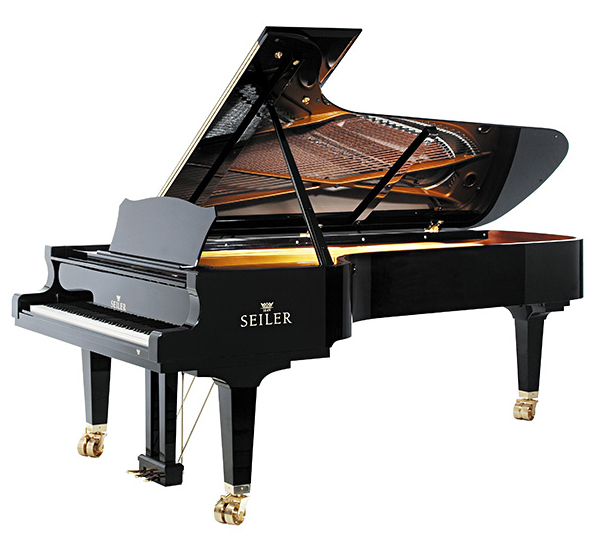
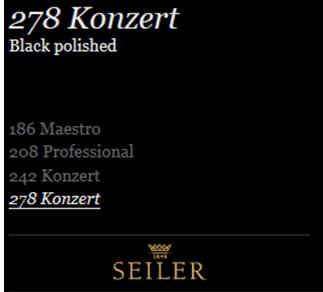
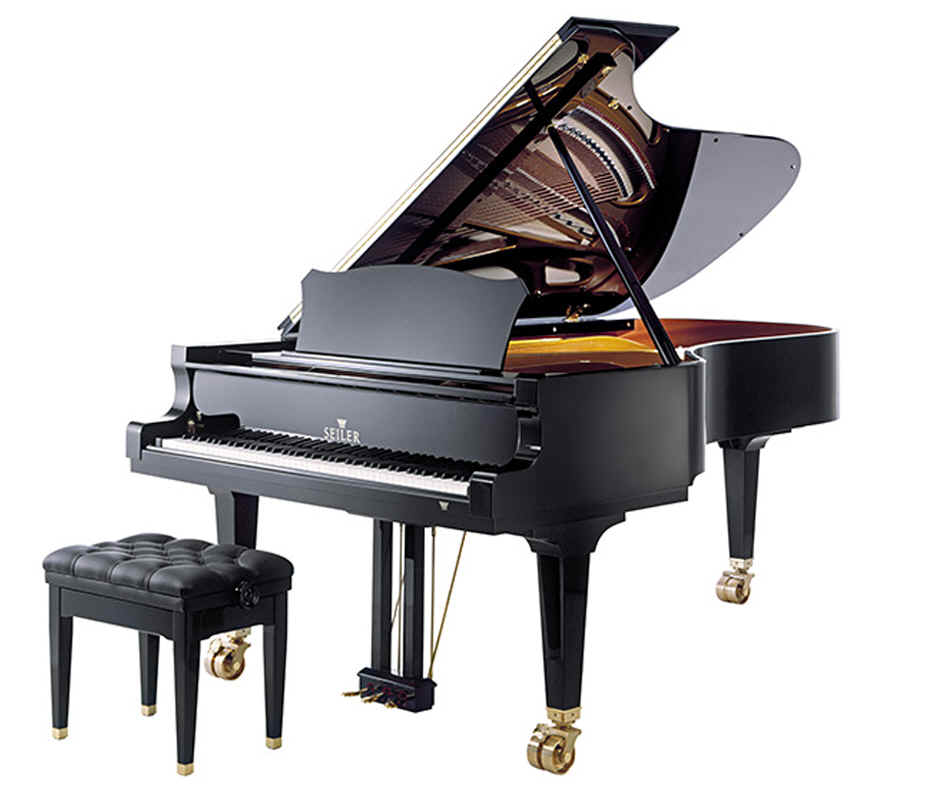
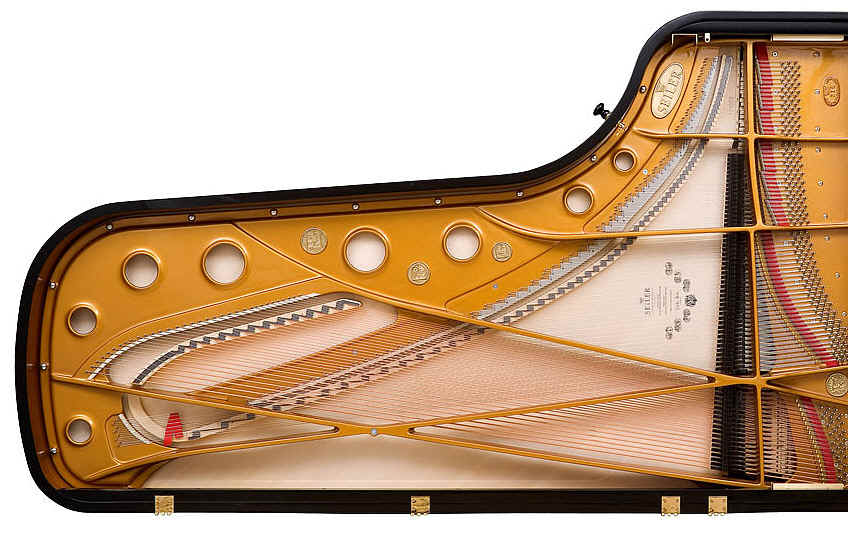 SEILER --
Kitzingen,
Germany
SEILER --
Kitzingen,
Germany
Seiler has existed as a piano manufacturer since 1849, but it is now owned by Samick of Korea. Their top-level instruments continue to be handcrafted at the Seiler factory in Kitzingen, Germany.
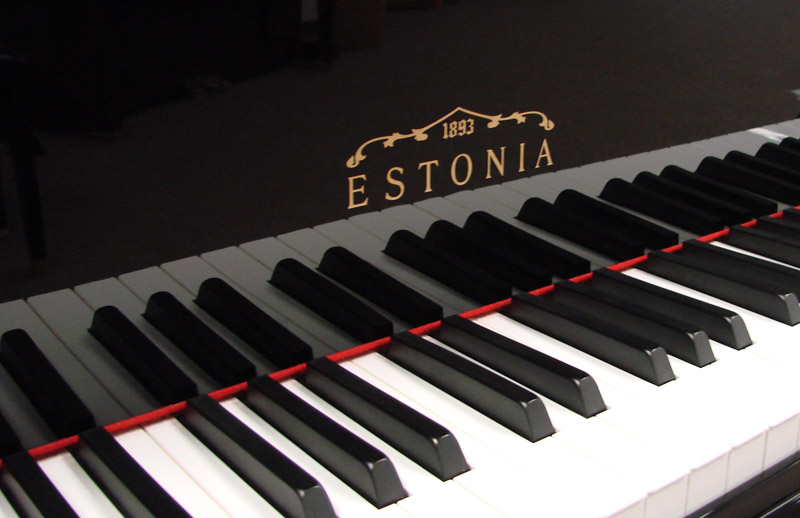
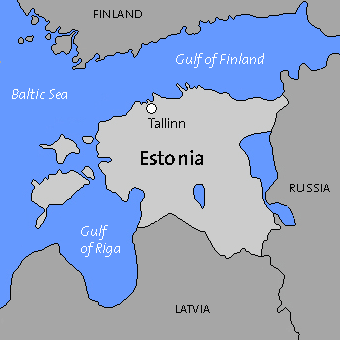

E S T O N I A P I A N O S
Tallinn, Estonia
Ebony
Polish Estonia Concert Grand Model 274.
Length 9' 0"
Width 5' 2"
Weight 1213 lbs.
Over
7500 Concert Grand pianos have been made in Estonia, which is
probably the largest number of concert grands made by any piano factory.
That is because Russia has never produced any pianos of top quality --
since Estonia was part of the Soviet Union for decades, it made
most of the concert grands used throughout the whole USSR.
Estonia Pianos is the only manufacturer from the former Soviet Union
that has survived, and now has a reputation of excellent quality at a lower
price than other European pianos.
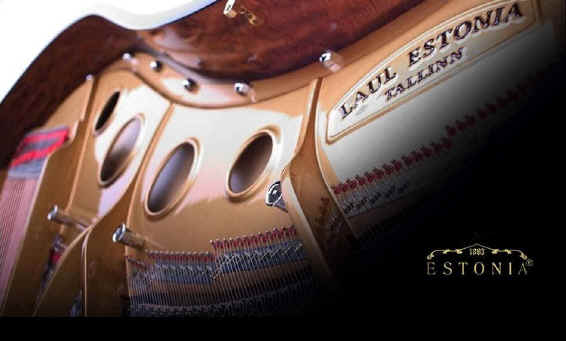
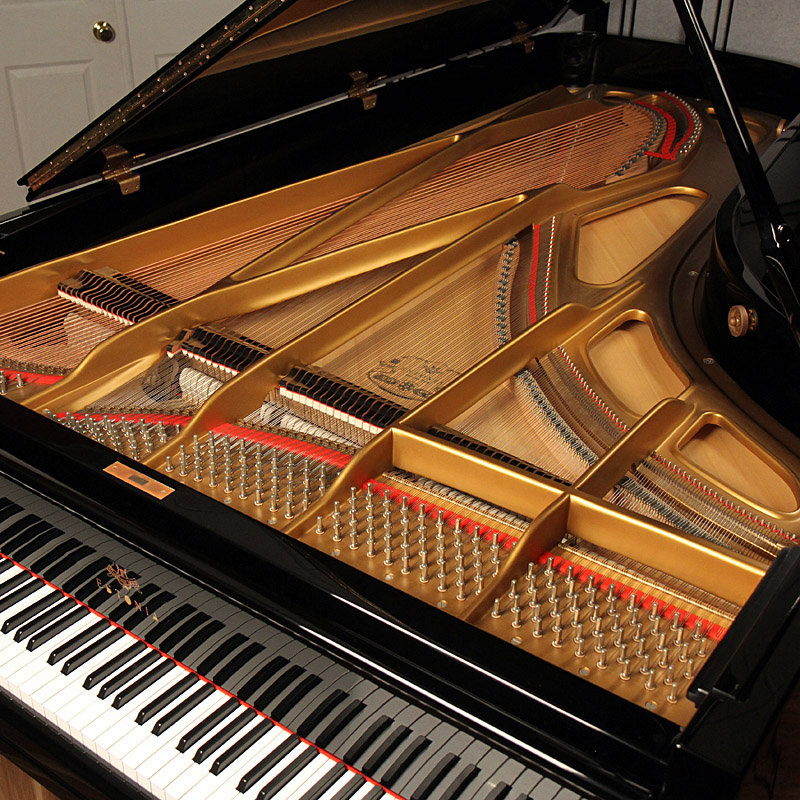
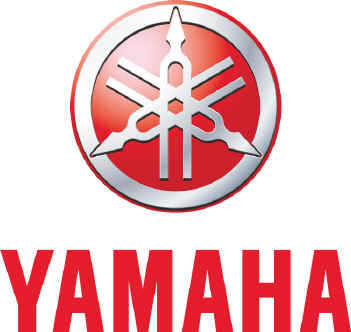
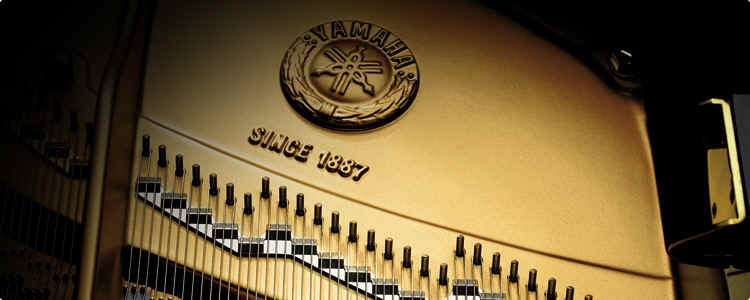
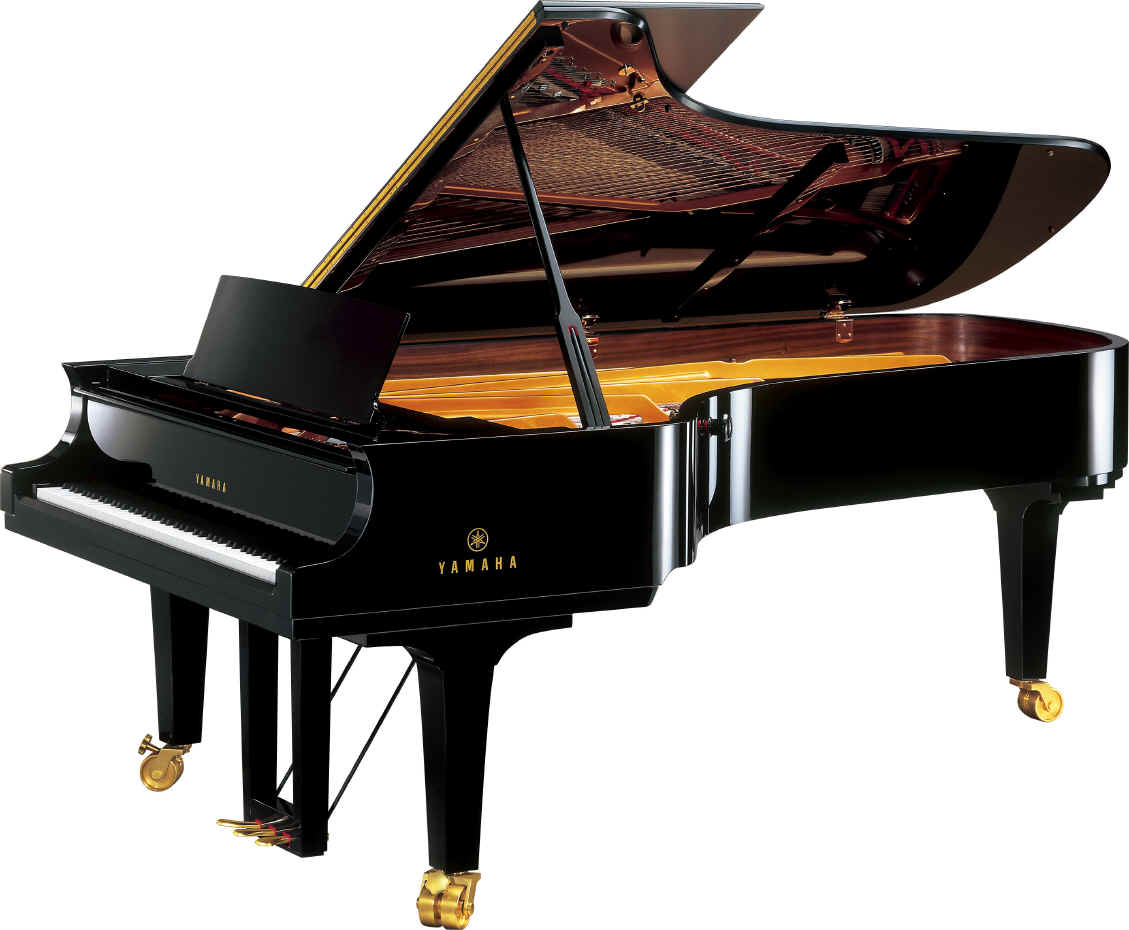
The Flagship of the CF series, the CFX
full concert grand piano represents the pinnacle of Yamaha's tradition of piano
crafting.
Beautifully made and with an exquisite
tone across the entire dynamic range, the CFX has the power to project its sound
to the furthest reaches of any concert hall.
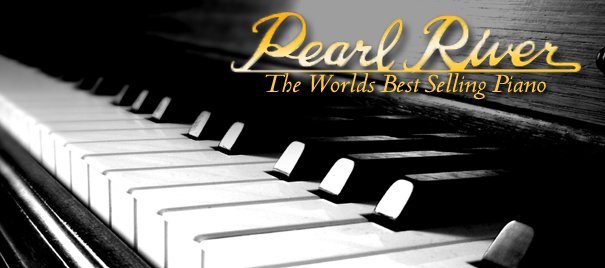


9 feet 1150 lbs
Pearl River
of China
is
probably the only budget brand that makes a concert grand.
They
are the largest piano manufacturer in the world, and sell most of
their concert grands within China.
The Pearl River concert grand is also sold with the Ritmüller name:
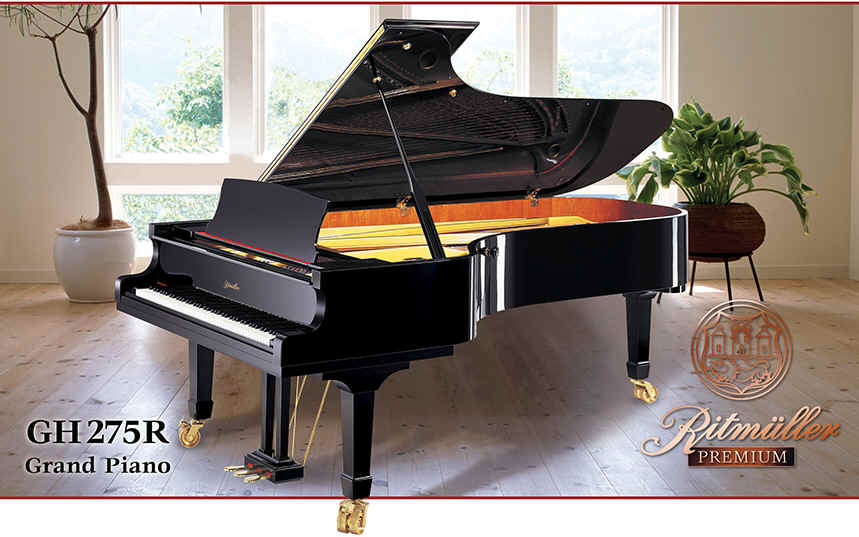

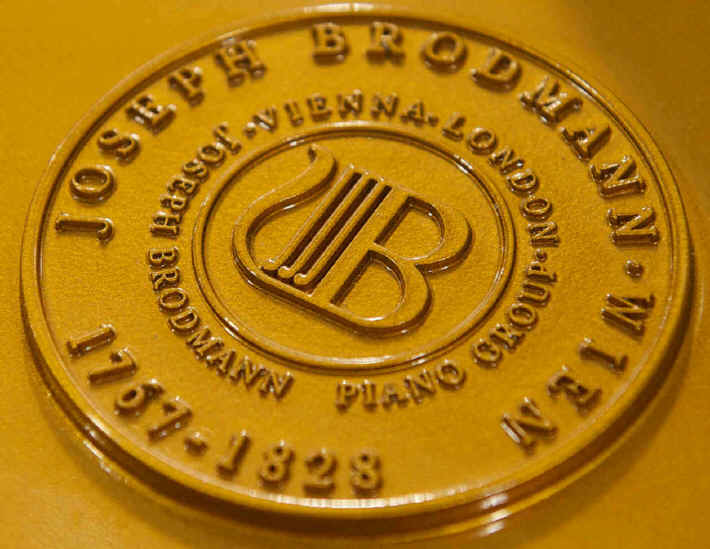

The Brodmann AS 275, introduced in 2011,
Some lower-priced Brodmann pianos are partially made in China, then shipped to
Austria where they are finished by Brodmann's technicians. But the 275
concert grand is wholly made in Europe.

Phoenix, Arizona USA
Weight
560 kg (1,234.6 lbs)
Length 275 cm (9')
Height 104 cm (3' 5")
Width 159 cm (5' 3")
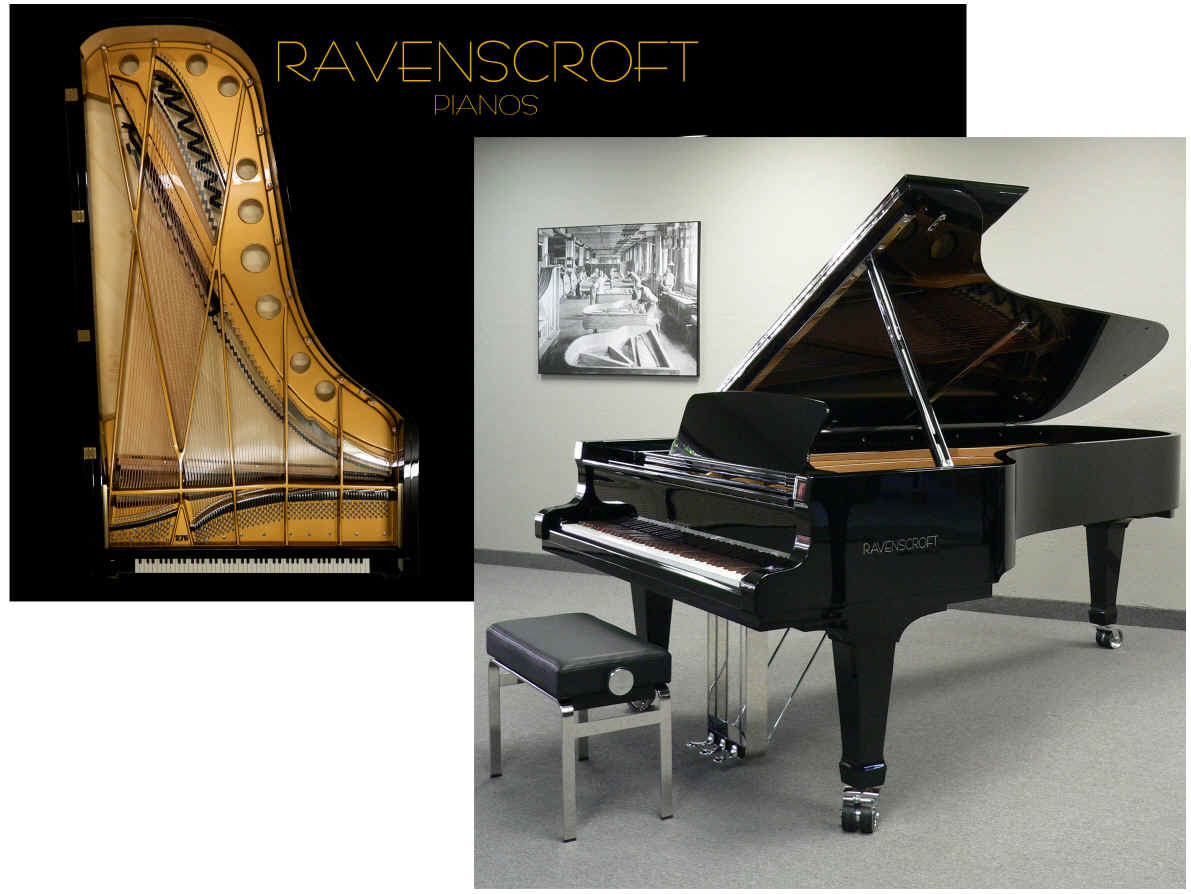
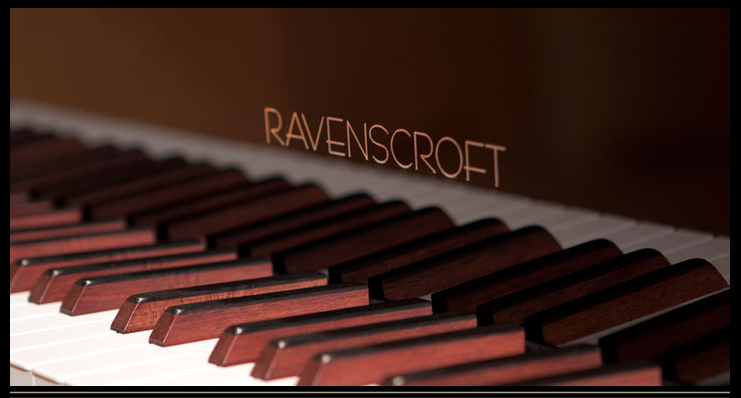
The frames for Ravenscroft pianos are made in Germany by Sauter, the oldest
piano company in the world,
which are then shipped to Arizona where the piano is assembled.
Over 1000 hours of work is put into each piano, which is two or three times as
much as most other companies.
These are the most expensive pianos made in America.
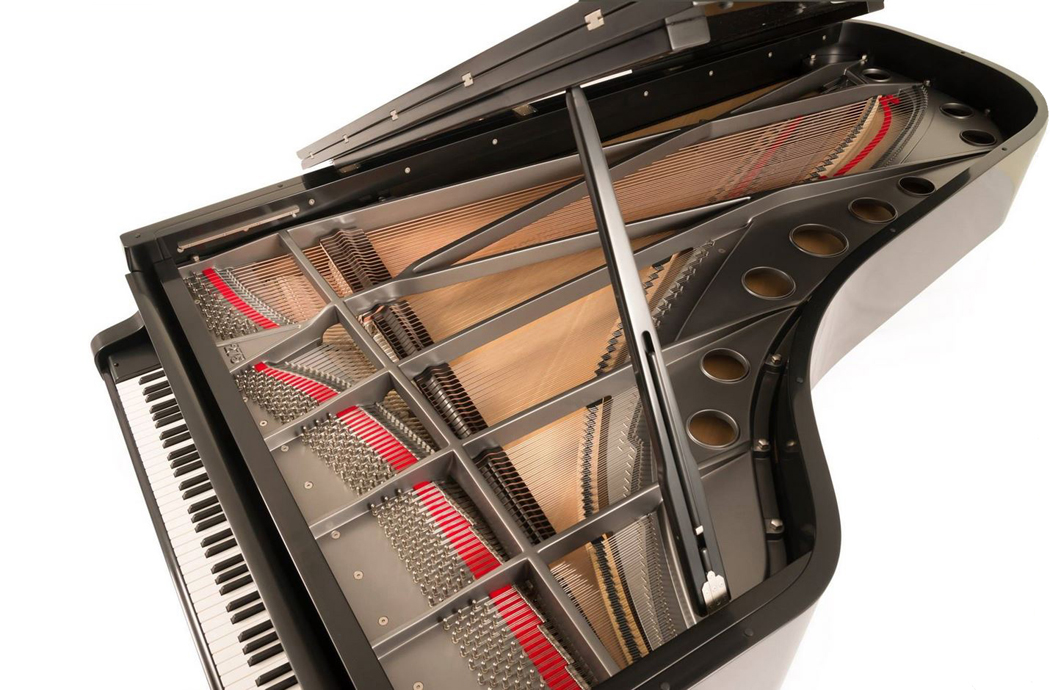
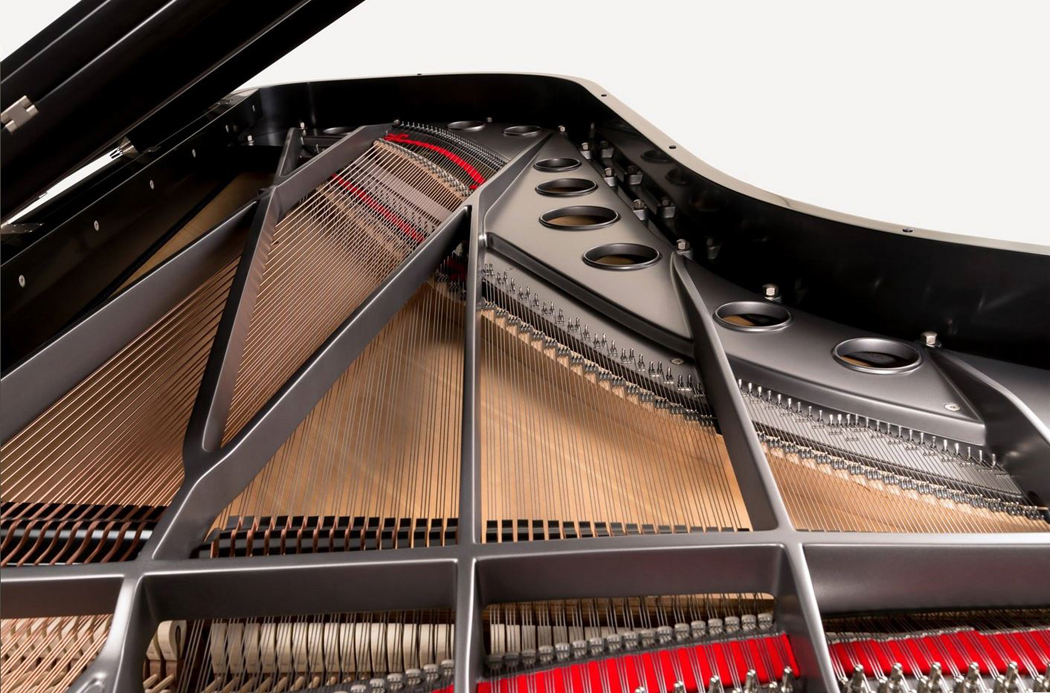

PHOENIX
PIANOS
Kent, England
Phoenix Pianos, of Kent, England, are perhaps the most
technologically advanced of all pianos, having soundboards made of carbon fiber,
making them very climate and humidity resistant. The action (hammers and
shanks) can also be ordered of carbon fiber, which eliminates the possible
warping, swelling, and shrinking that can happen to wooden parts over the
years.
The acoustic case and frame is made by Steingraeber of Bayreuth, Germany, one of
the most respected piano manufacturers in the world.
The case can be ordered in any of over 100 types of wood. On this model, the 272-centimeter long Concert Grand, the keys are made of ivory from the tusks of wooly mammoths!! Elephant ivory, used for centuries for piano keys, is rightfully no longer legal to use. But mammoth ivory, dug up from the frozen tundra of Siberia, thousands of years old and worth its weight in gold, is legal to use.
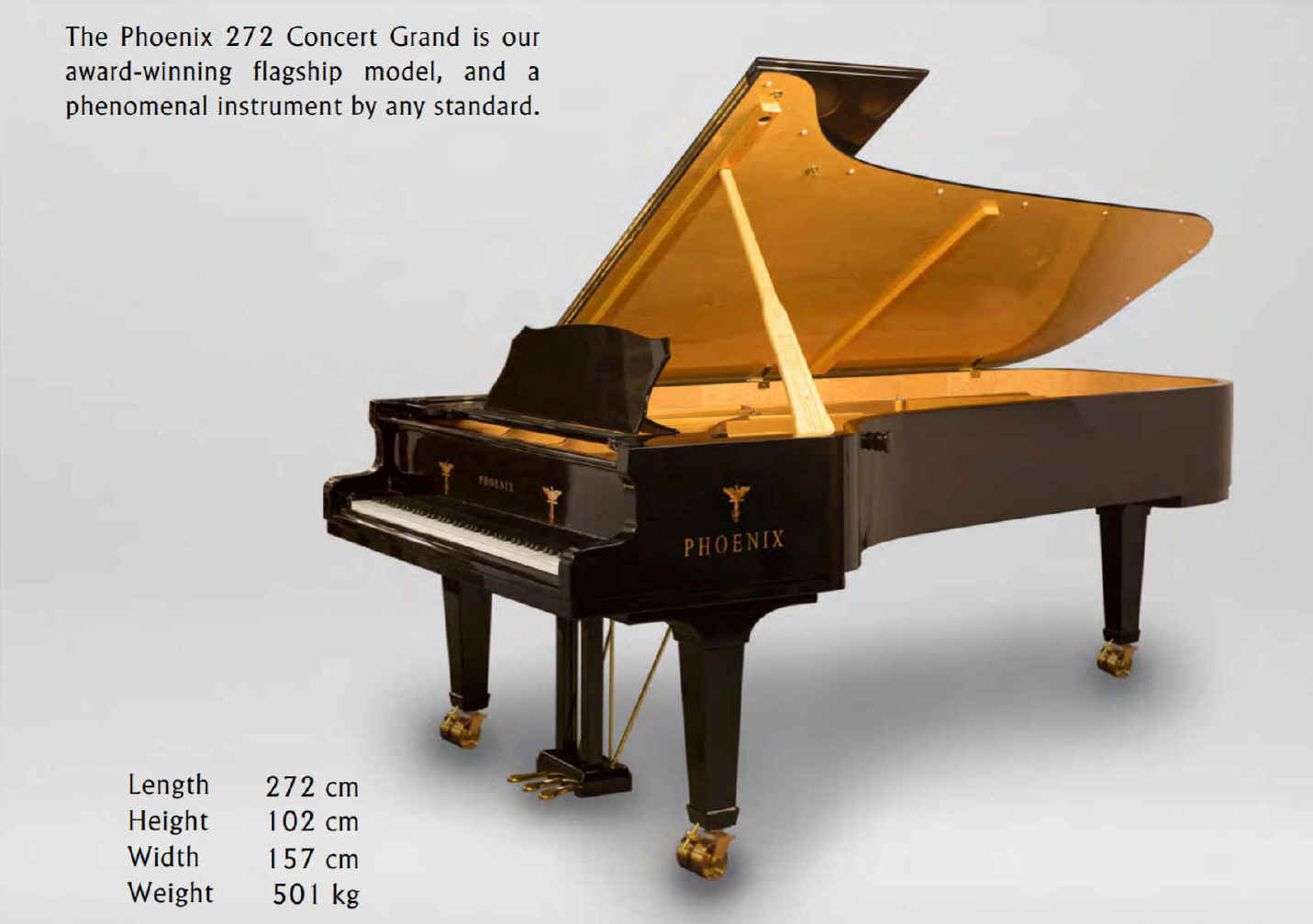
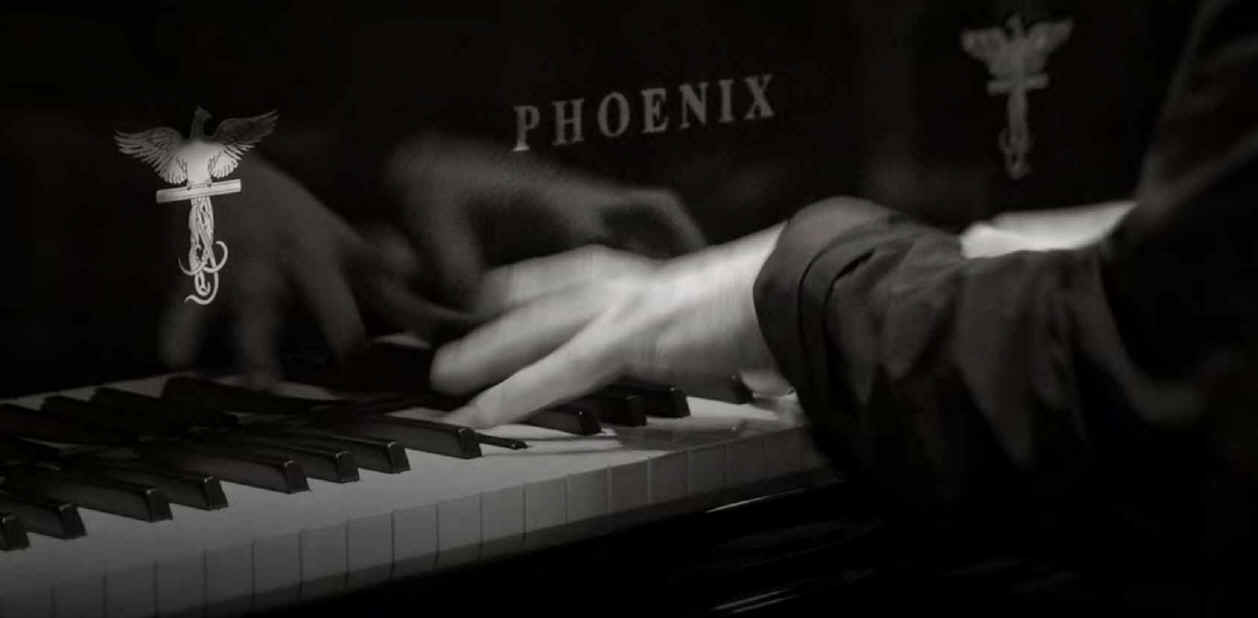
The key tops are made of ivory
from the
tusks of Siberian woolly mammoths!

CHRIS MAENE
Straight-Strung Pianos
Ruiselede, Belgium
The Chris Maene Grand Piano is the first
to bring back the straight-strung concept to the 21st century.
Up until the late 1800's, all grand pianos were straight-strung, meaning the
strings for the lowest keys were not crossed over the mid-range strings as can
be seen in the overhead views for all the pianos above. The bass strings
in all other brands except for Chris Maene are diagonally crossed in order to
achieve a small amount of extra length within the frame, producing greater
volume, though with perhaps a small amount of tonal interference.
However,
most of the classical repertoire played today was written by composers who,
during their lifetime, were familiar with straight-strung
instruments only, such as Haydn,
Mozart, Beethoven, Schubert, Schumann, Brahms, Liszt, and Chopin.
To achieve the clarity that those composers would have heard in their own
pianos, Chris Maene of Belgium has designed the world's only straight-strung modern
grand pianos, combining the transparent sound of the bass keys with the
strength, power, and stability of a 21st-century grand.
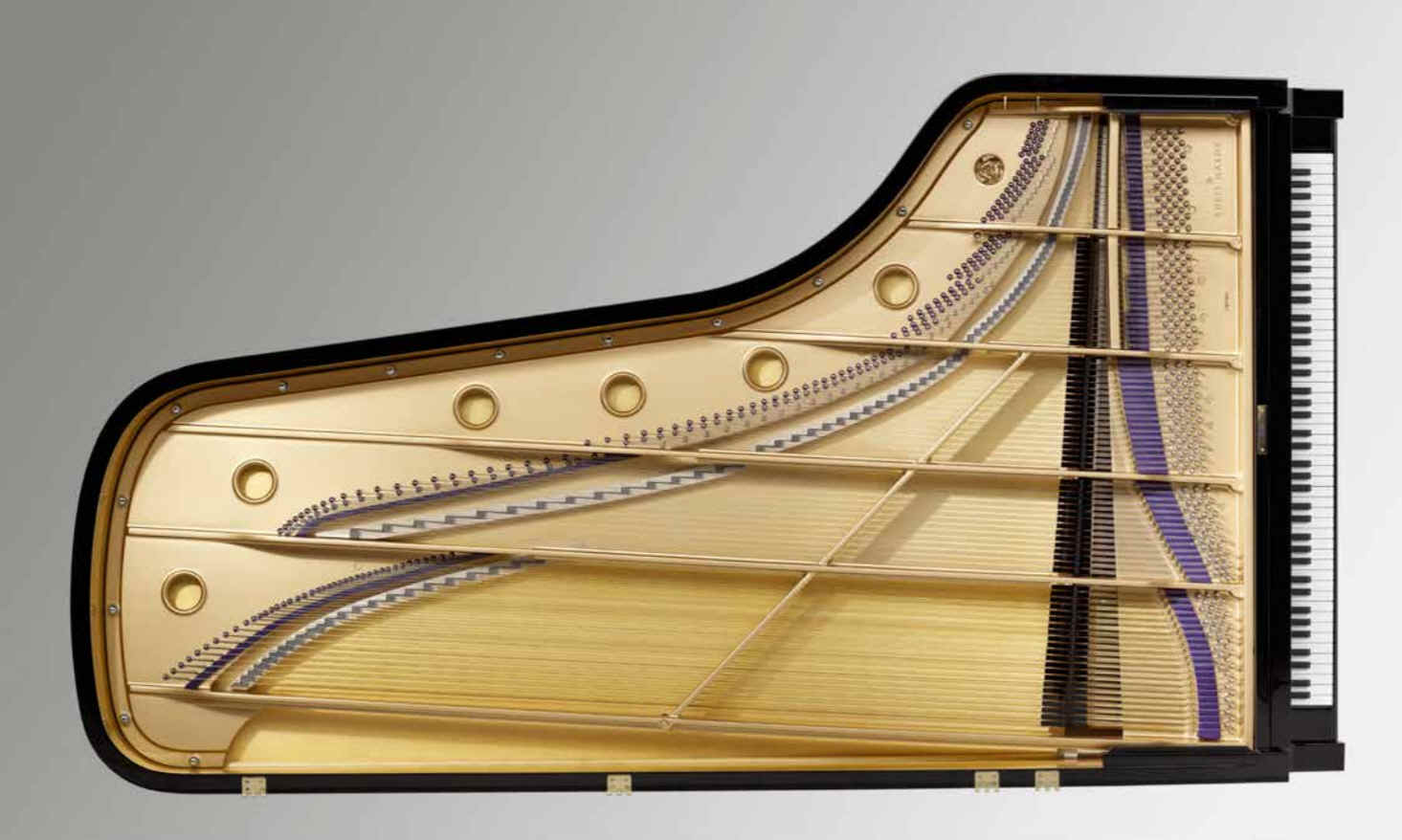
Notice how all strings are perfectly parallel, compared to all
other brands above.
This is also the world's only 90-key piano, going two notes lower than standard
keyboards.

The Chris Maene Concert
Grand 284
• Dimensions: L 284 cm / W 157 cm
• Compass: 90 keys, GGG – c’’’’
• Keyboard: Kluge, Remscheid, Germany (built according to Chris Maene
specifications)
• Black keys: ebony wood
• White keys: non-slippery and non-reflecting composite material
• Bass strings: Bespoke brass wound bass strings, handmade and custom
calculated
• Action: Renner action and hammers / Built according to Chris Maene
specifications
• Soundboard: Patent Chris Maene / Red spruce from the Alps / Hand polished
The braces under the
piano are not spread into a fan-shape like on other pianos, but are placed
parallel to the strings for strength.
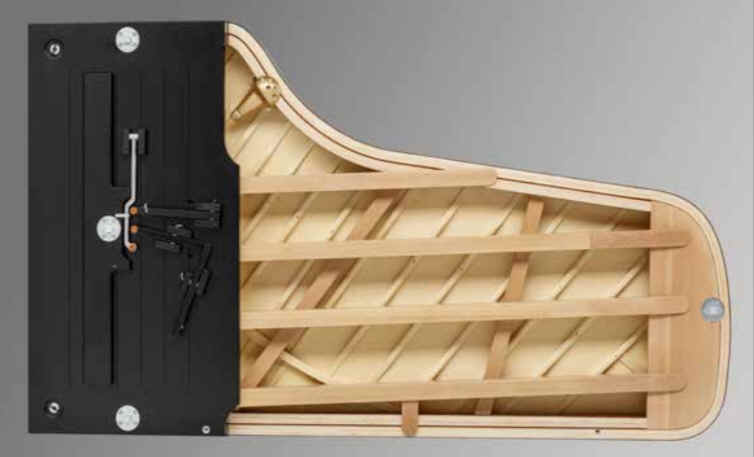
The Chris Maine factory:
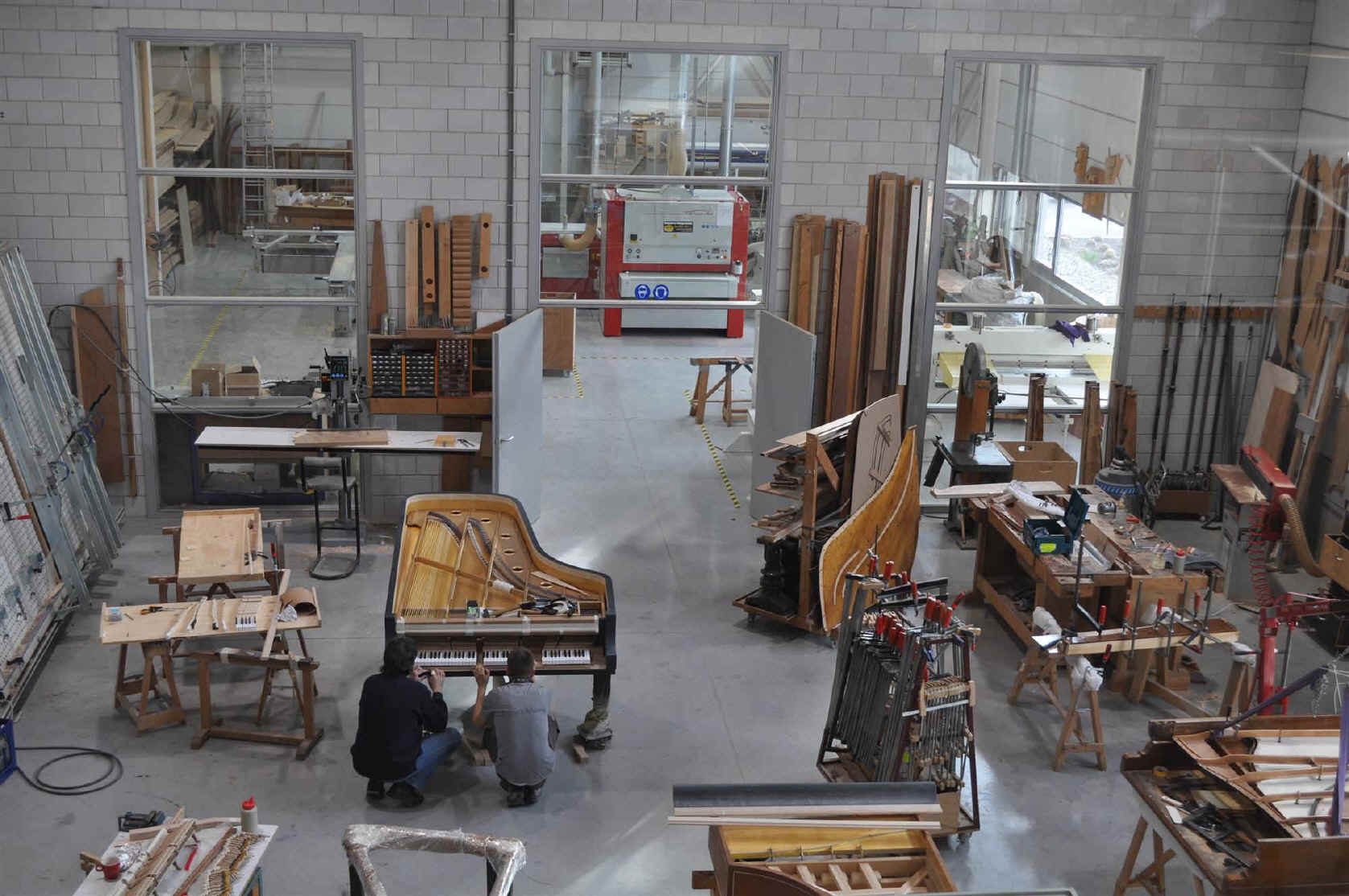
 Borgato Hand-Crafted Concert Grand Pianos
Borgato Hand-Crafted Concert Grand Pianos
Vicenza, Italy
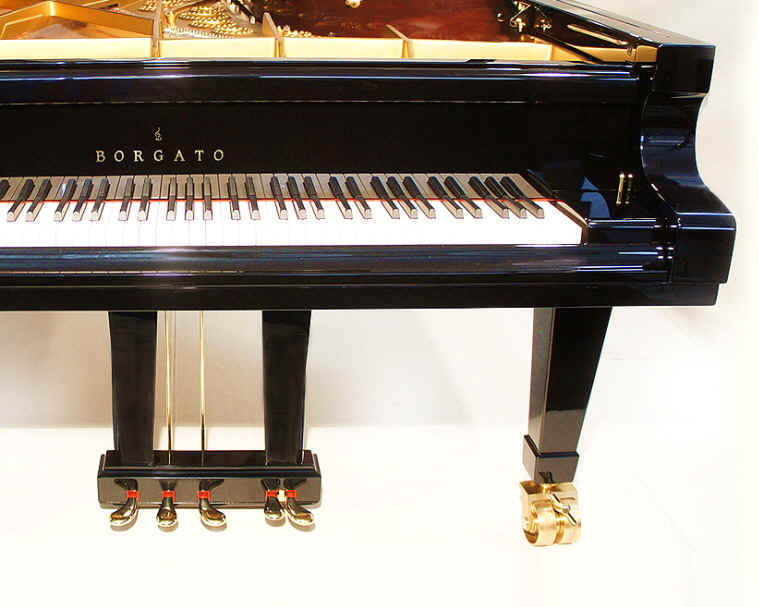
The 282 is Borgato's concert grand.
(282 centimeters long, or 9 feet 3 inches)
The Borgato 333 is the world's longest piano.
though it is not a regular production model.
It can be special ordered for about $655,000!
(333 centimeters long, or 10 feet 11 inches)
The top 44 keys of Borgato
pianos
have 4 strings per key.
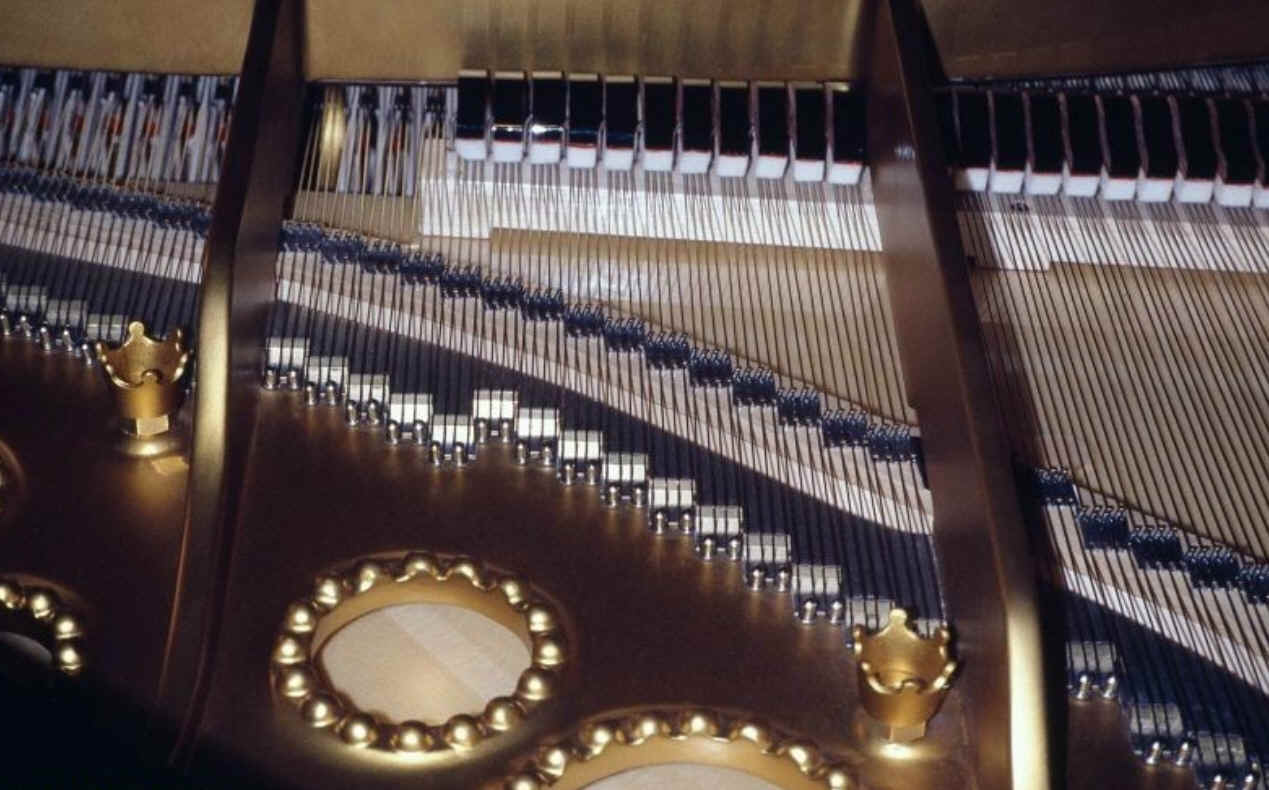
Borgato also can make you a special double concert grand! The lower piano is controlled by foot pedals, which you can see in front of the seat.
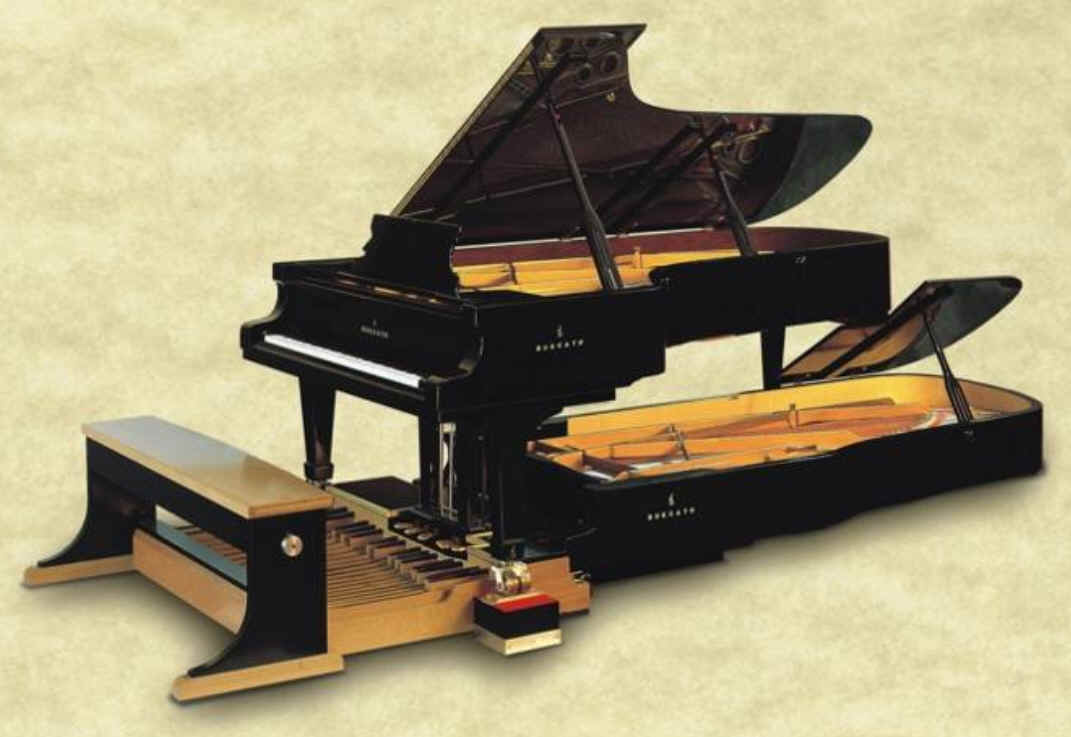
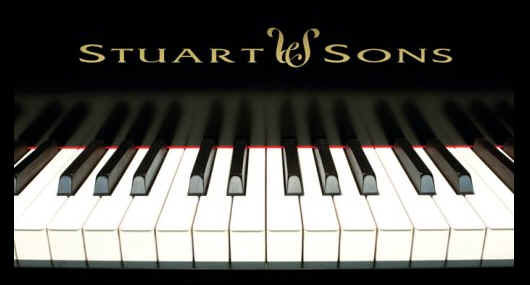
Newcastle, New South Wales, AUSTRALIA
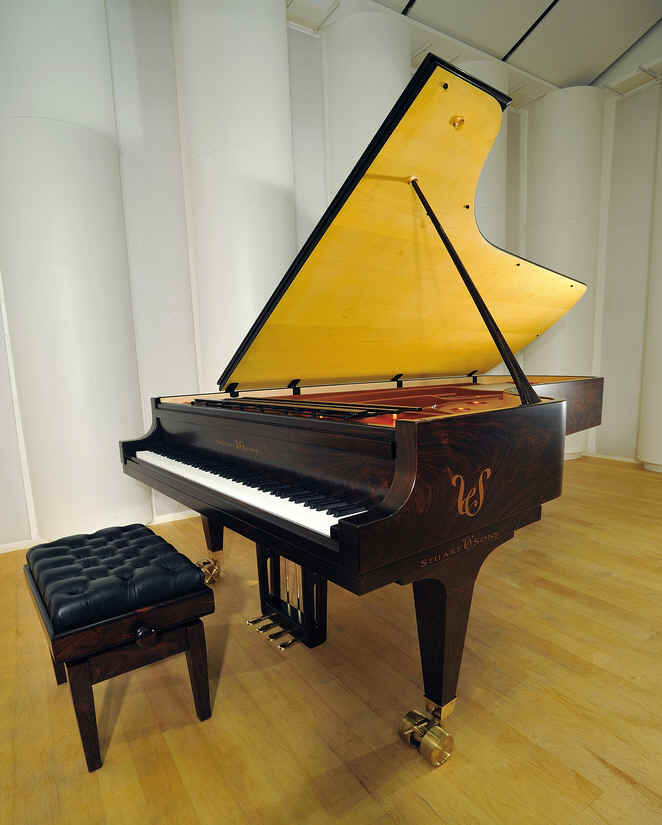 Stuart
& Sons Concert Grand -- 9 feet 6 inches long.
Stuart
& Sons Concert Grand -- 9 feet 6 inches long.
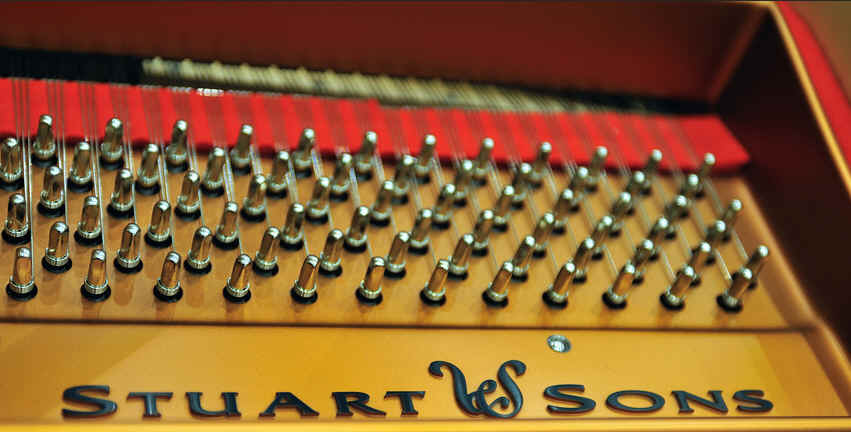
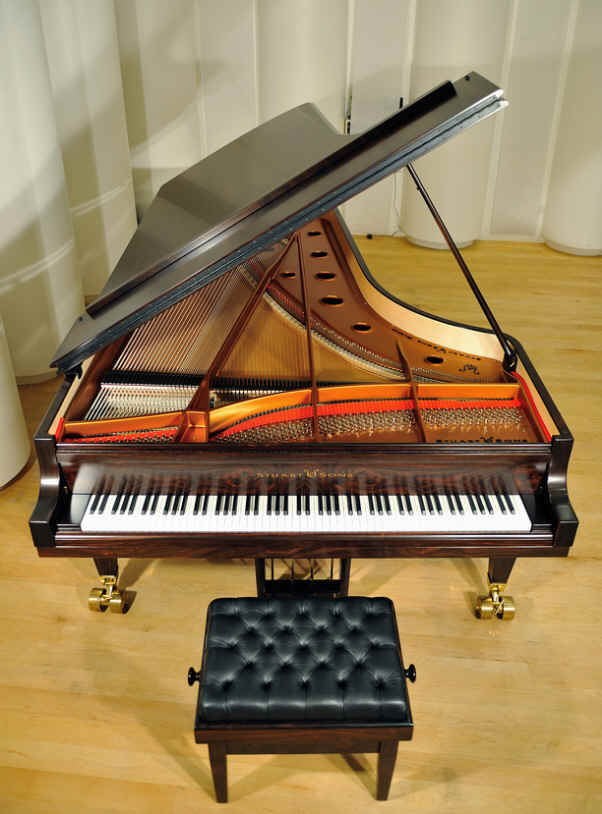
Stuart & Sons of Australia is the only company
in the world to make a piano with 102 keys --
an extra 9 in the bass, plus another 5 on the treble end.
These cannot be considered as normal production pianos;
only one or two are made a year, as special orders.
They are often made with exotic Australian woods such as
sassafras, sycamore or Tasmanian Huon pine.
Each piano takes over a year to manufacture.
So what kind of piano do I have?
(
)
(
)
(
)
(
)
(
)
(
)
(
)
(
)
(
)
(
)
(
)
(
)
Here it is:
(
)
(
)
(
)
(
)
(
)
(
)
(
)
(
)
(
)
(
)
(
)
(
)
|
\/
At the factory in Austria -- 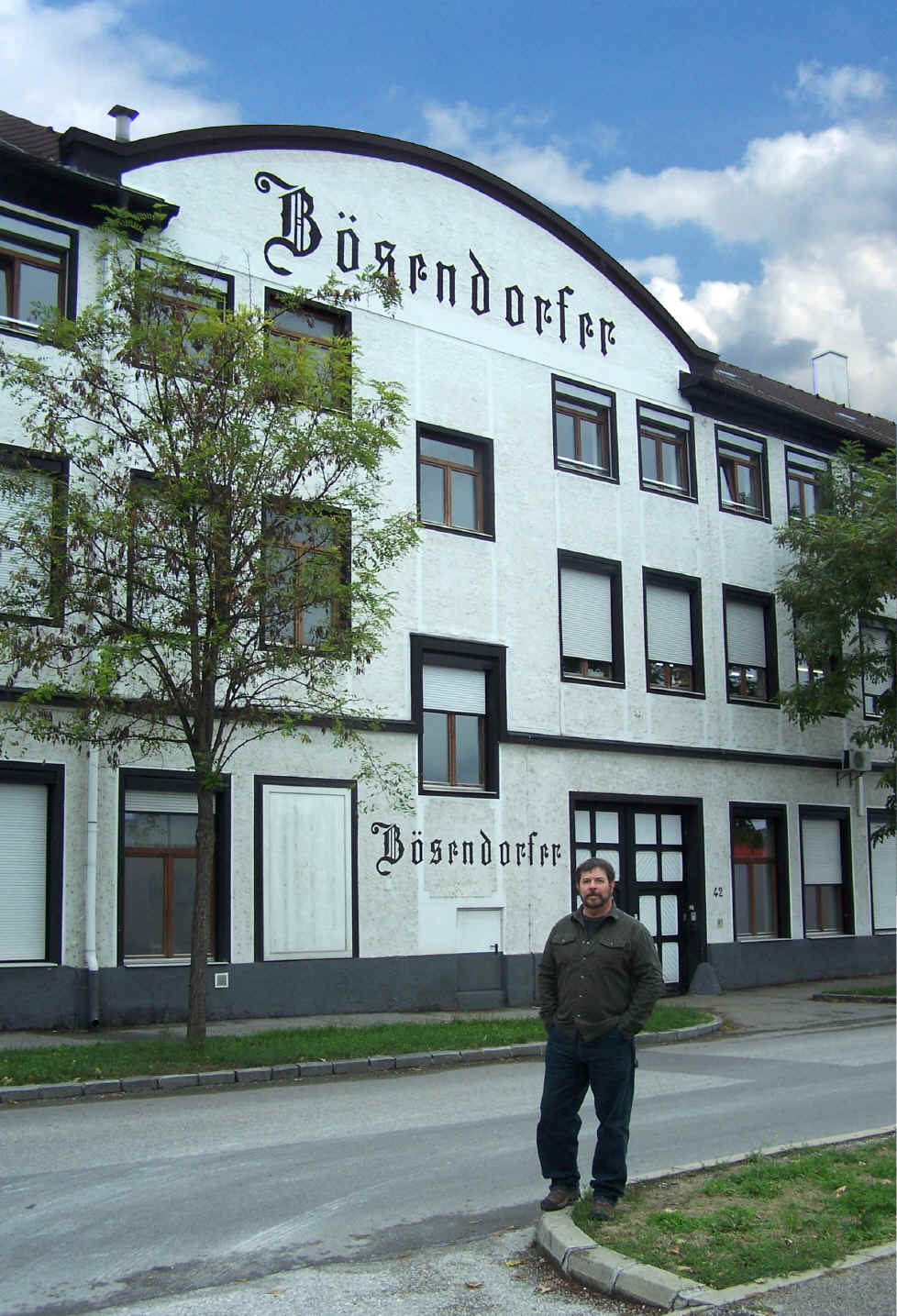 -- in September 2013.
-- in September 2013.
At my house:
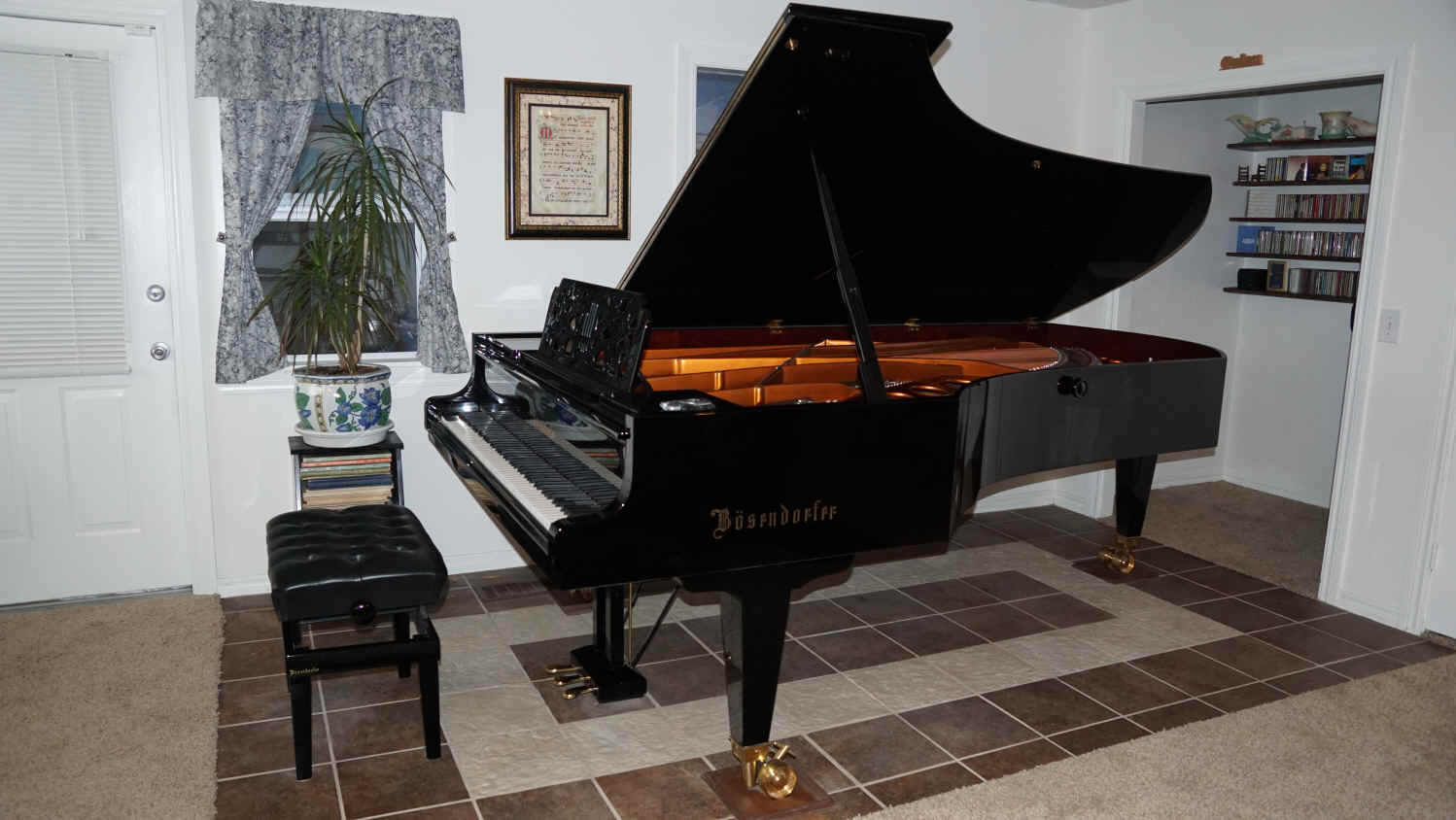
Since the piano weighs 1250 lbs, I had to crawl on my stomach under the house and install a few large wooden supports under the floor. I wanted tile under the piano to reflect the sound, but I didn't dare lay the tile and then roll those brass wheels across it, the tile would have shattered instantly. So I put the piano in place, jacked up one leg with a jack from my pickup truck, laid some tile under it, and let it stand there with the leg in the air for a week till the glue dried, while laying some other tiles around it. Then I had to put in the grout, and let that sit for a week to dry too. I made the wooden wheel plates with a soft felt underside, and then finally let the wheel down on one of them. No cracks! So then I had to do the same thing with the other two legs. It took over two months to get all the tile laid under the piano, which was kind of hard on the head, too.
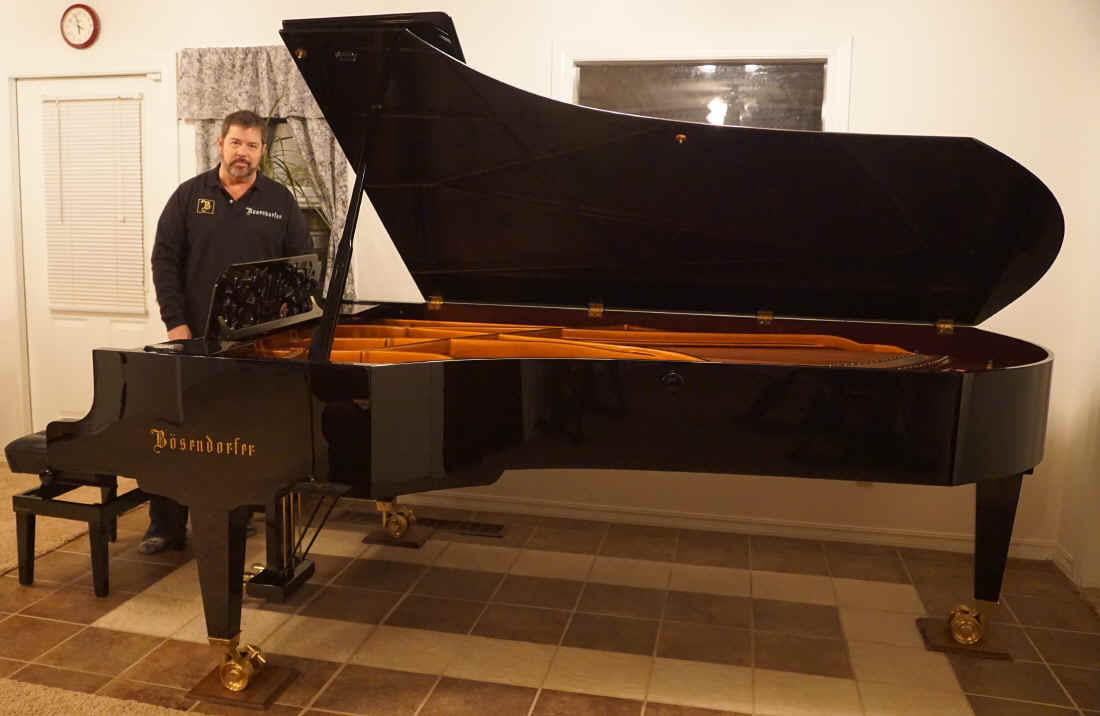
Yes, it may be too much piano for the room it's
in, but isn't it better for it to be cared for, loved, and played daily in a
small house,
than stuck forever on some cold concert stage, shoved around, and loved by
nobody?
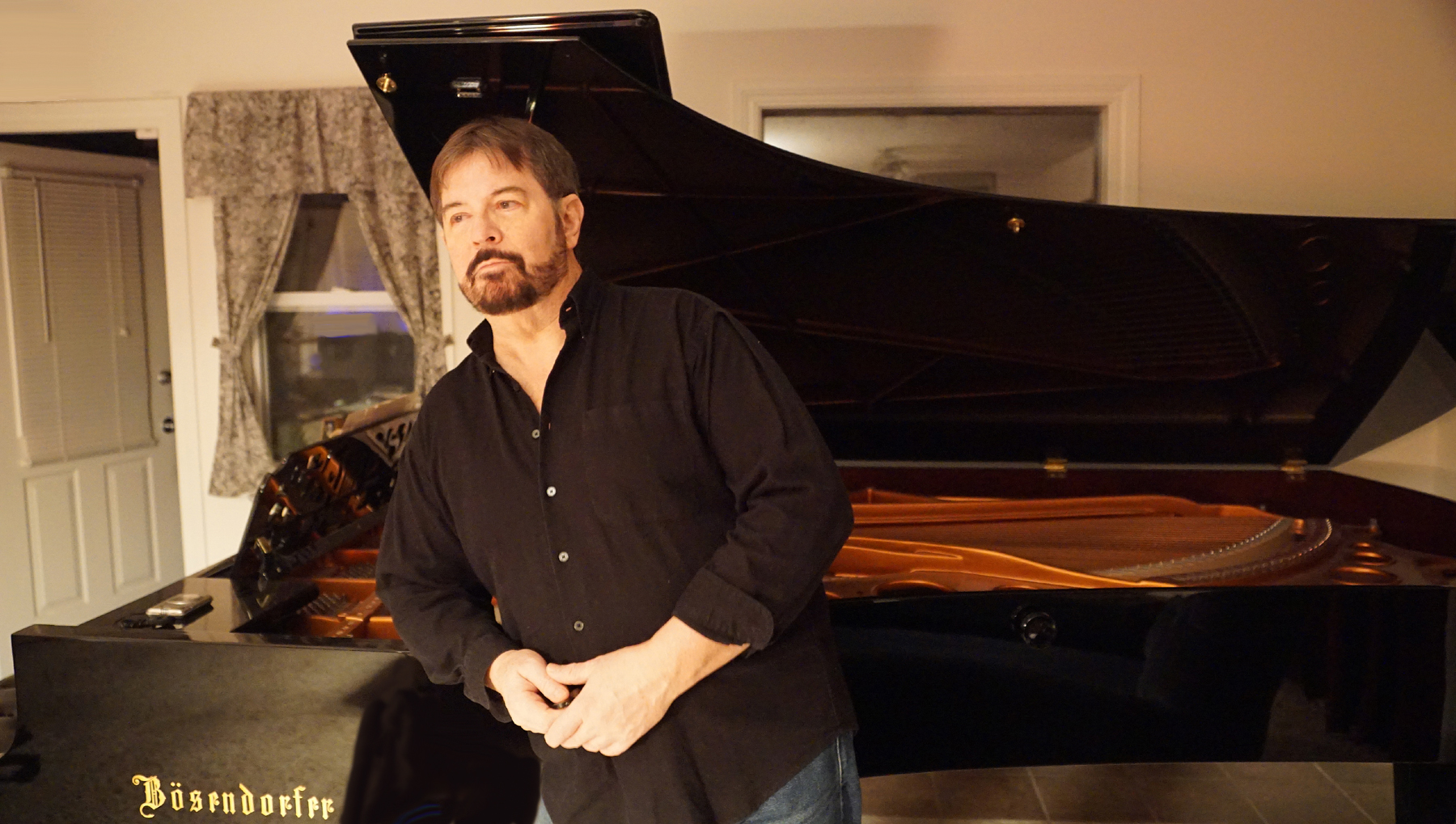
The special music stand is the "Johann
Strauss" model. Notice the nine extra notes at the end.
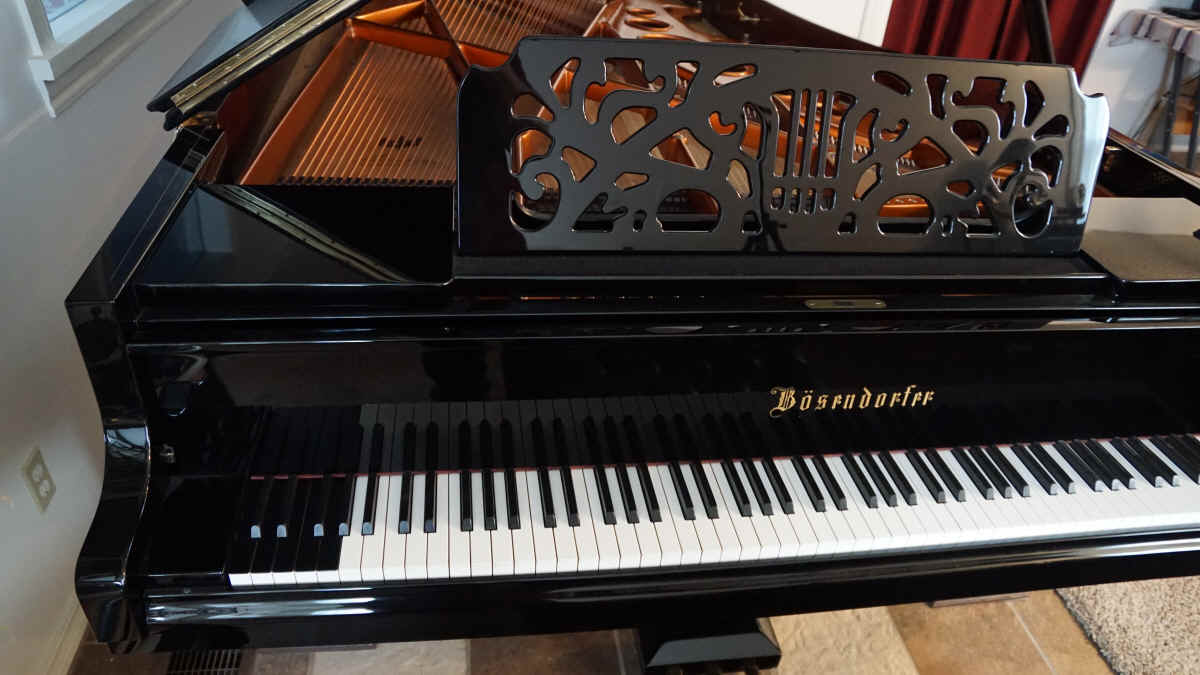
It was autographed at the factory by the great
French pianist, Philippe Entremont.
Strangely enough, the first piano record I ever got, way back when I was a kid,
was by him.
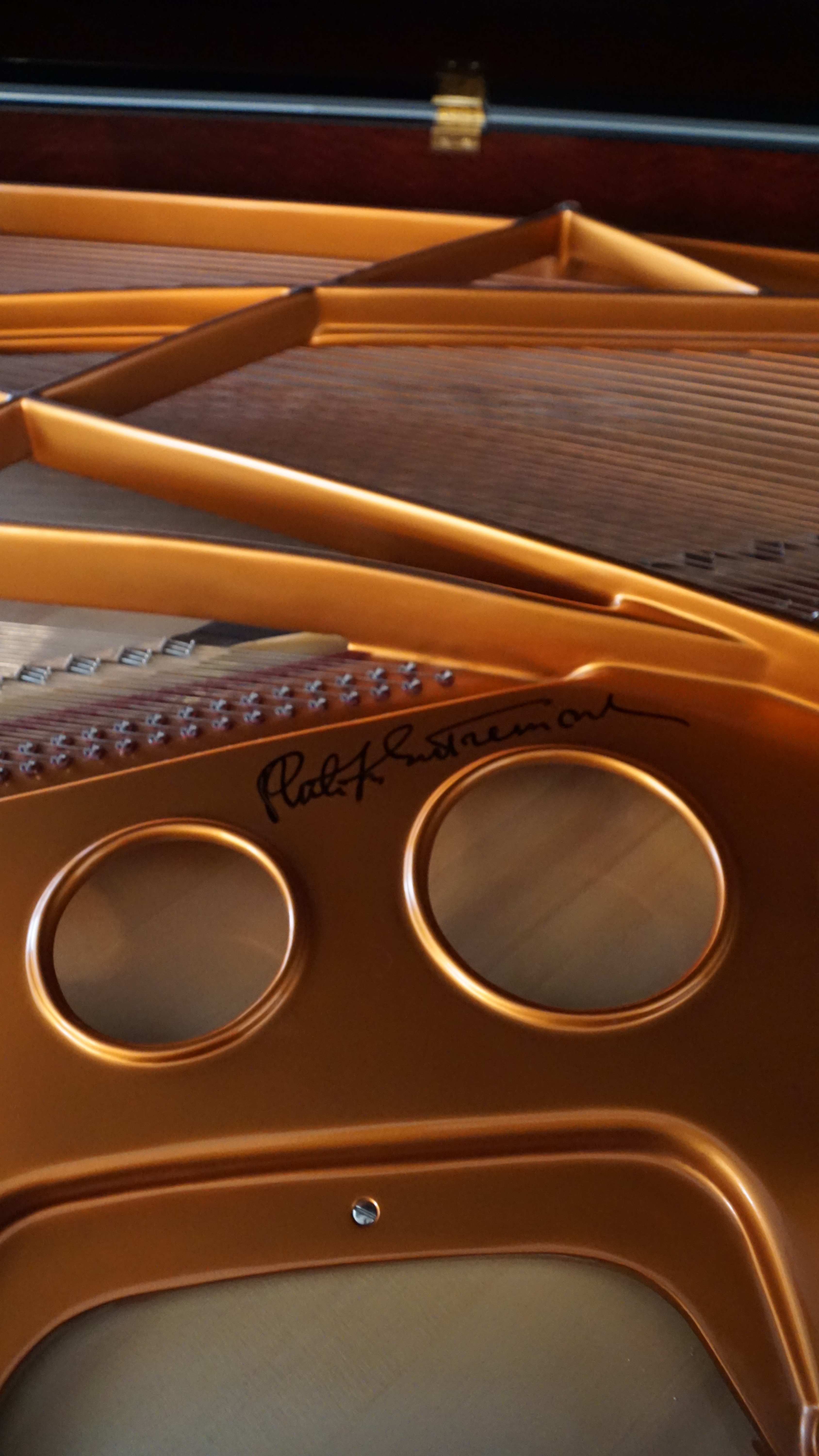
I also have a Lyon & Healy grand, made in
Chicago in 1923, which I restored. Lyon & Healy was a famous piano
brand for decades, but they ceased production long ago.
However, they still manufacture fine concert harps -- they are the largest and
most famous harp maker in the world, still in Chicago.
This piano was in such terrible shape that I got it for free, and hauled it from
San Francisco to Oklahoma in the back of my truck.
I stripped off all the old scratched-up black lacquer, and found out to my
surprise that there was mahogany veneer under it. I sanded it for hours,
but the color could not be restored.
So I put on 2 coats of black wood dye and 2 coats of black wood stain.
Finally I smeared on 3 layers of tung oil by hand.
It may well be the only piano you'll ever see that is solid gloss black, but
clearly shows a wood-grain pattern instead of having the usual opaque black
lacquer found on most pianos.
I put a lighter-colored veneer inside the grand curve and on the underside of
the lid. Then I replaced all the bass strings, all the dampers, all the
felts, and the name plate.
But in spite of all that work, it still sounds like some old honky-tonk ragtime
piano!
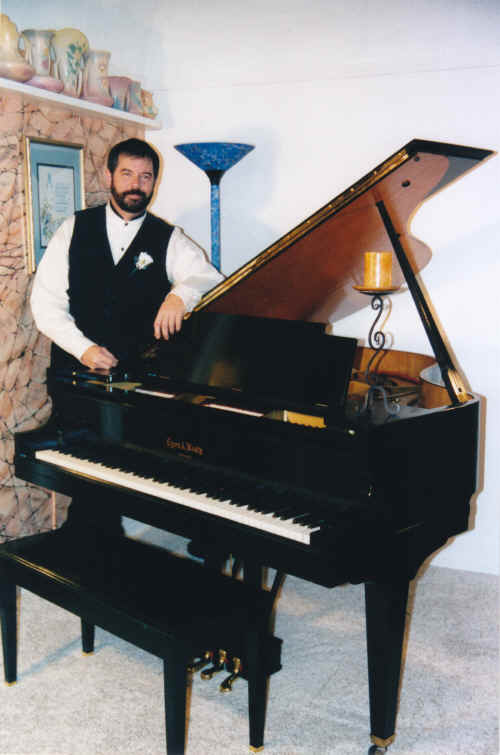
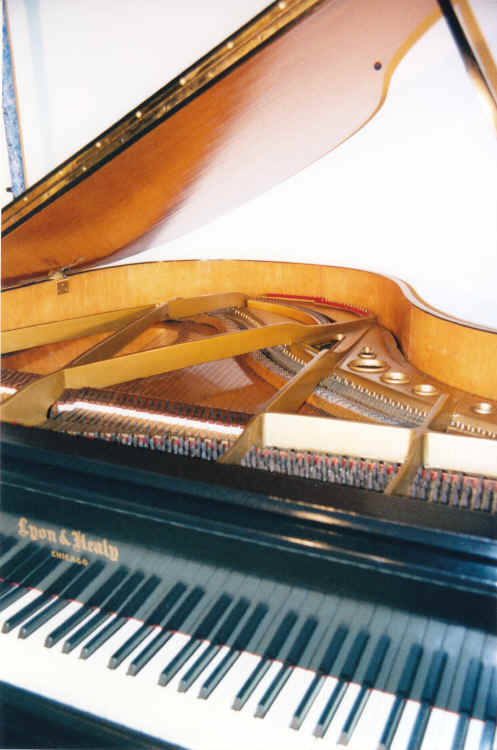
That's all!
The end.
Galen